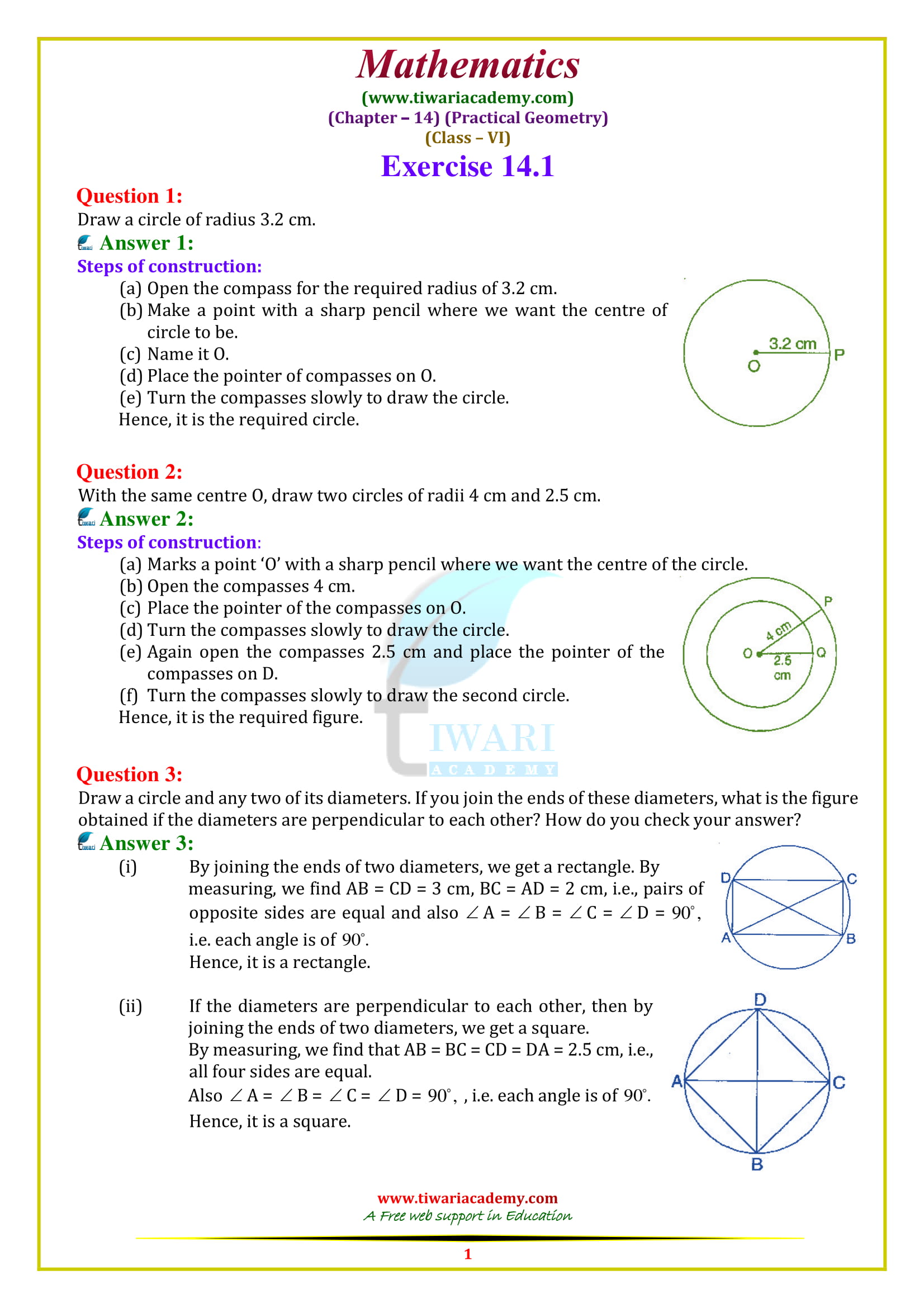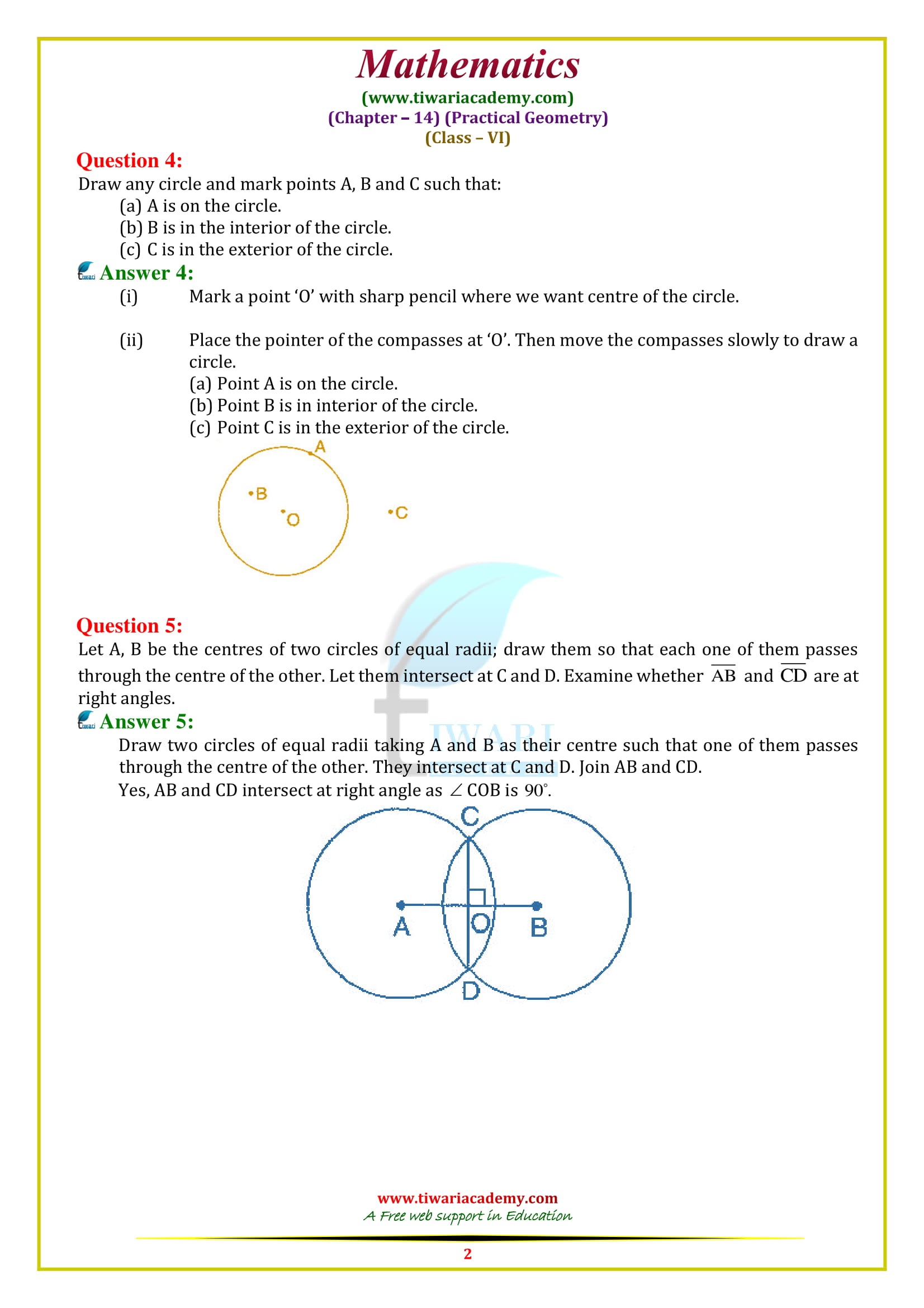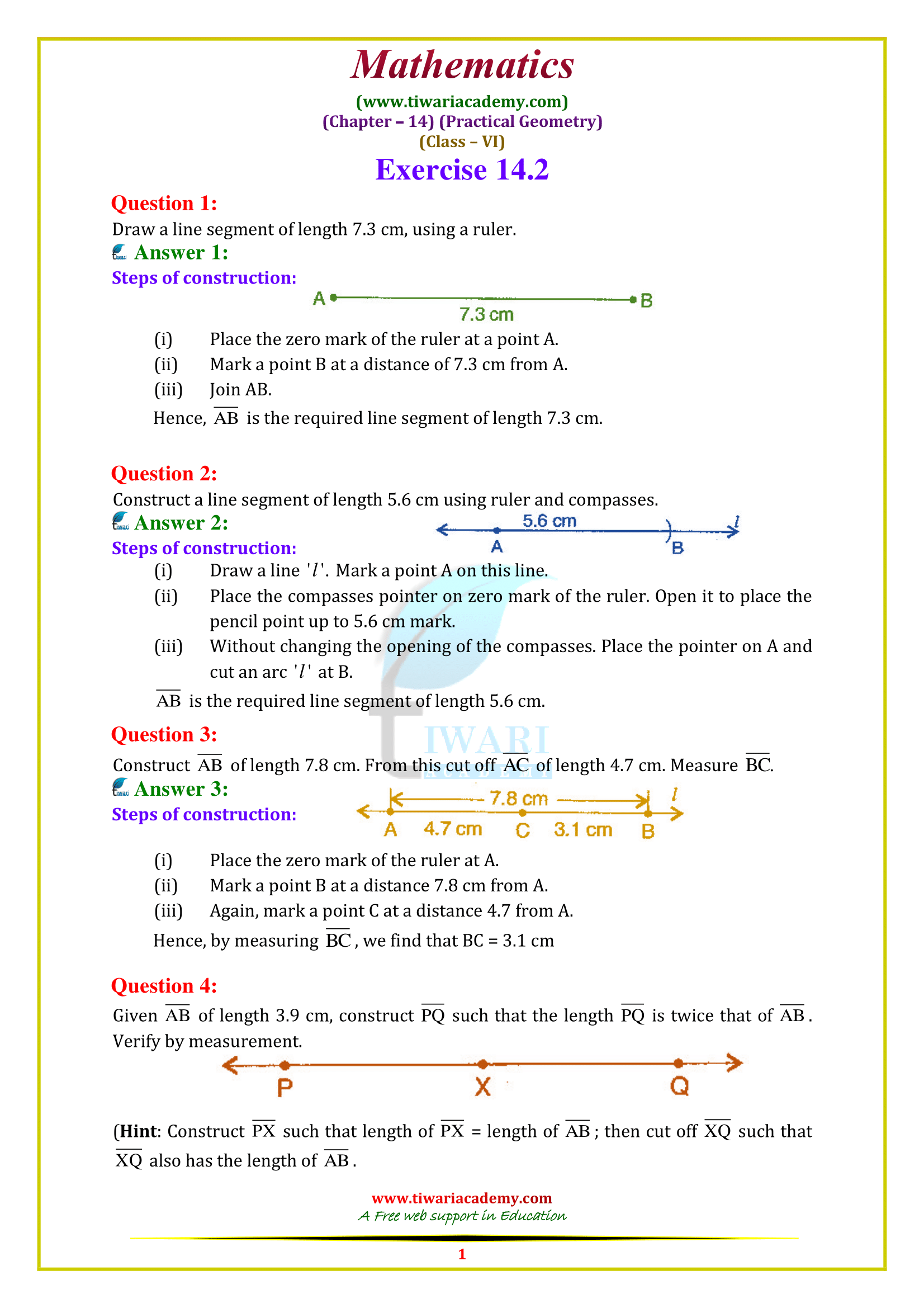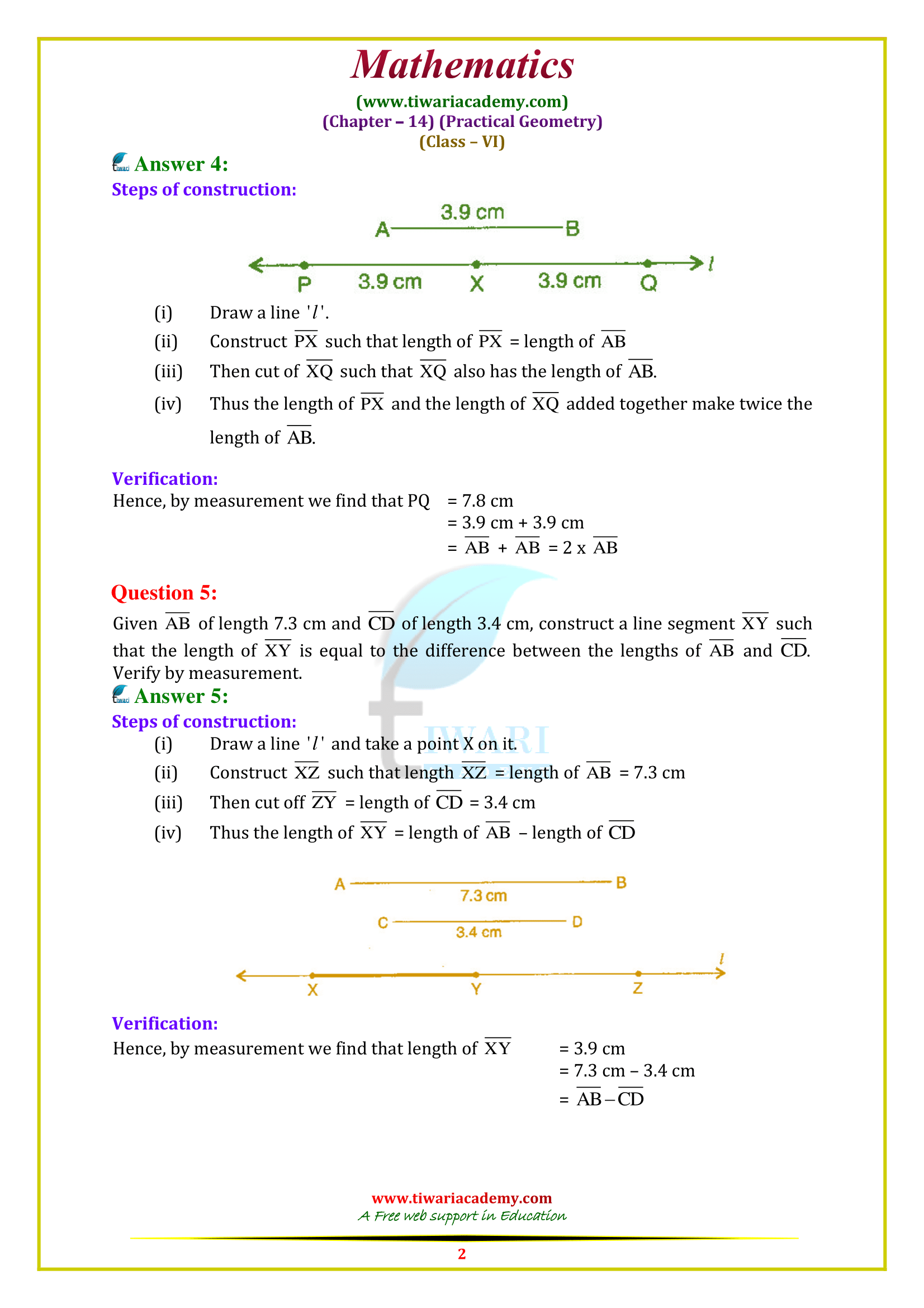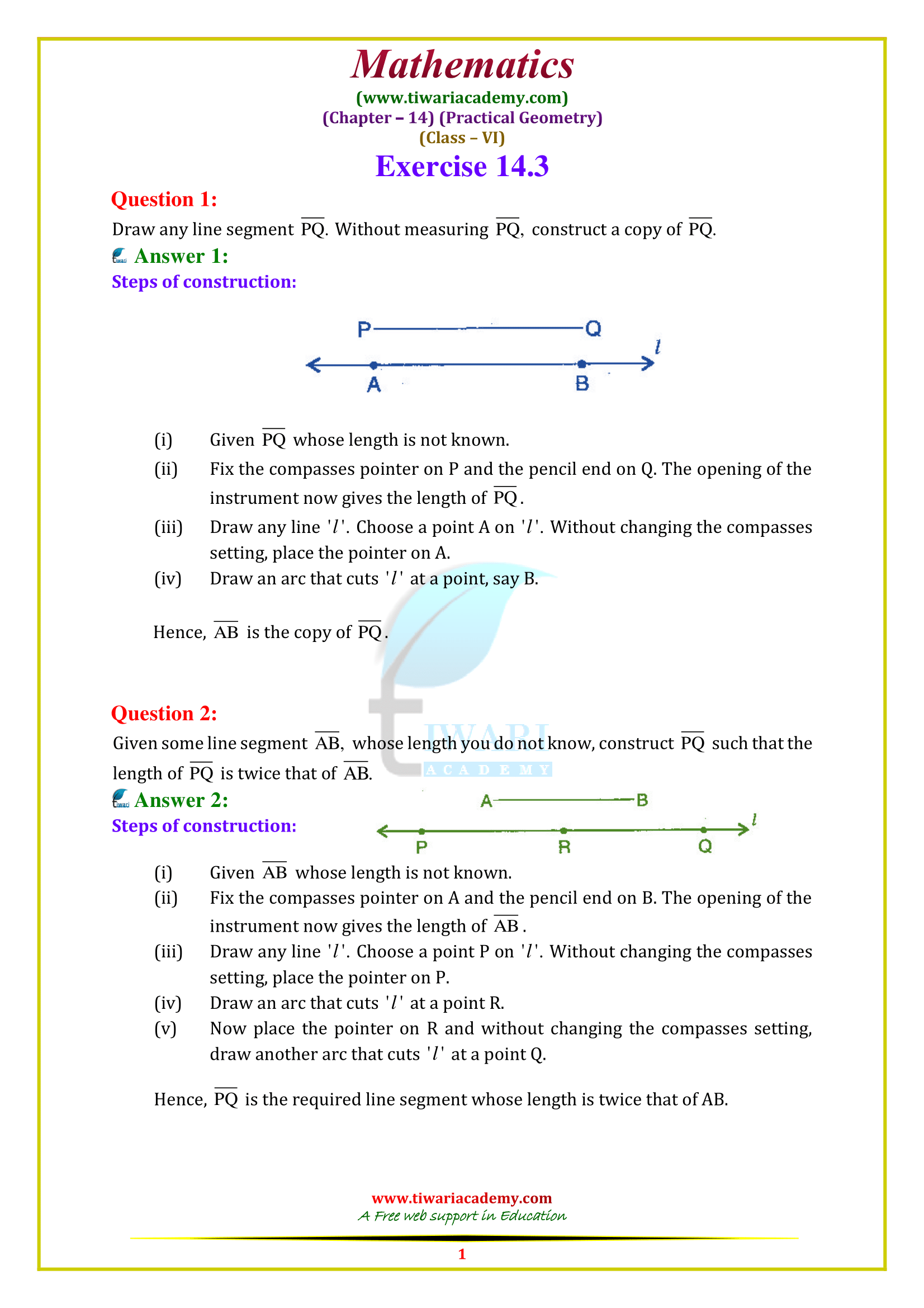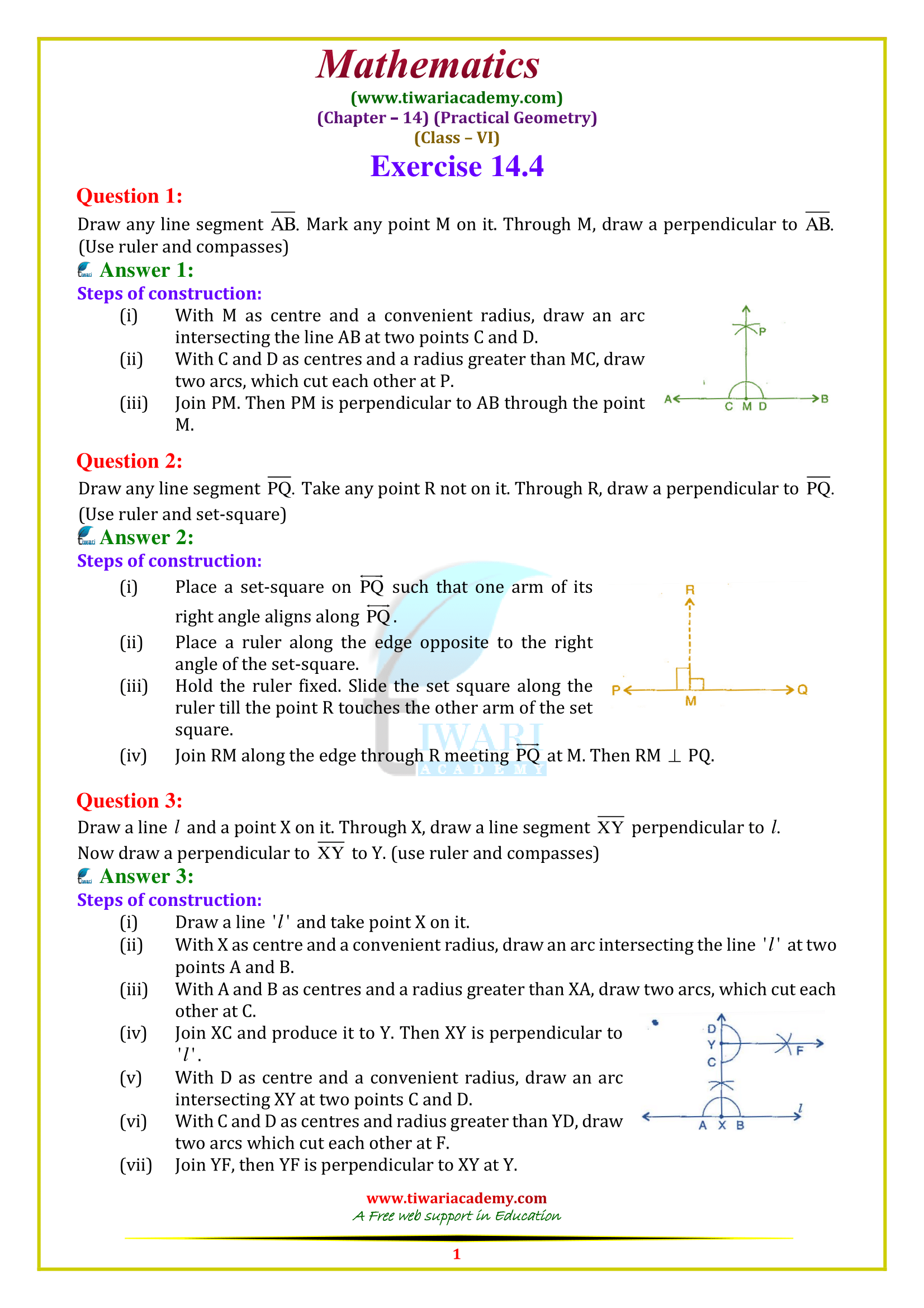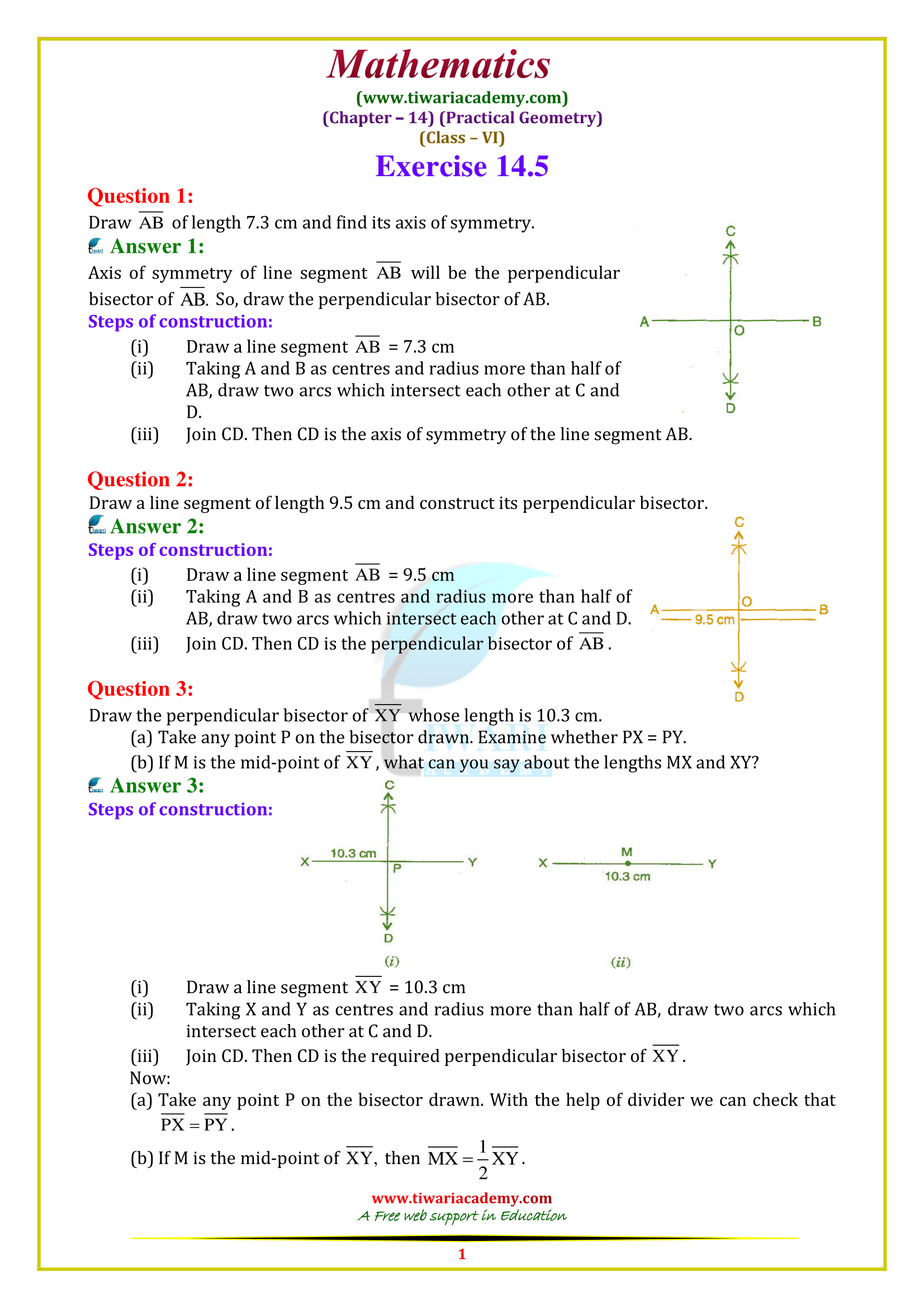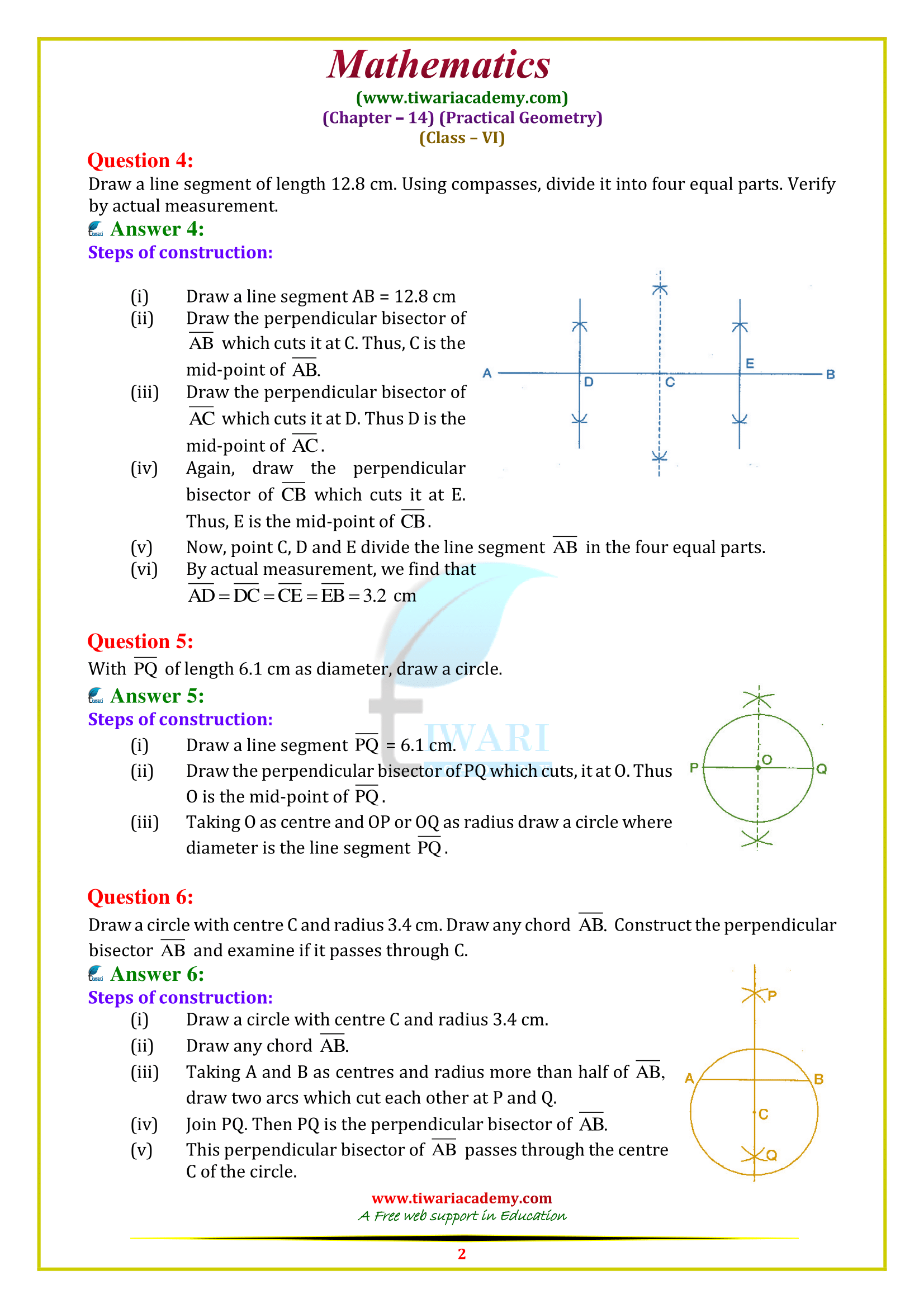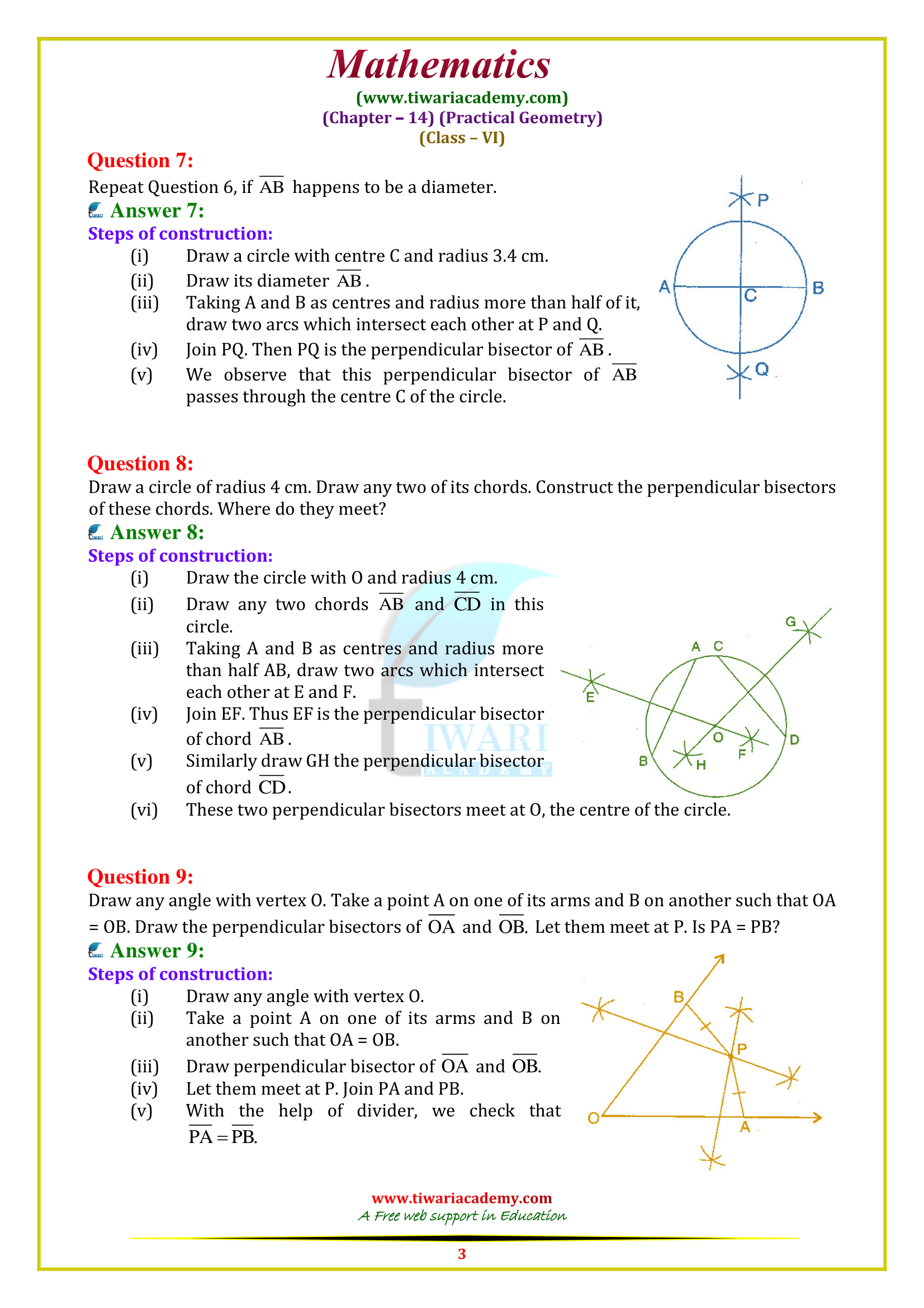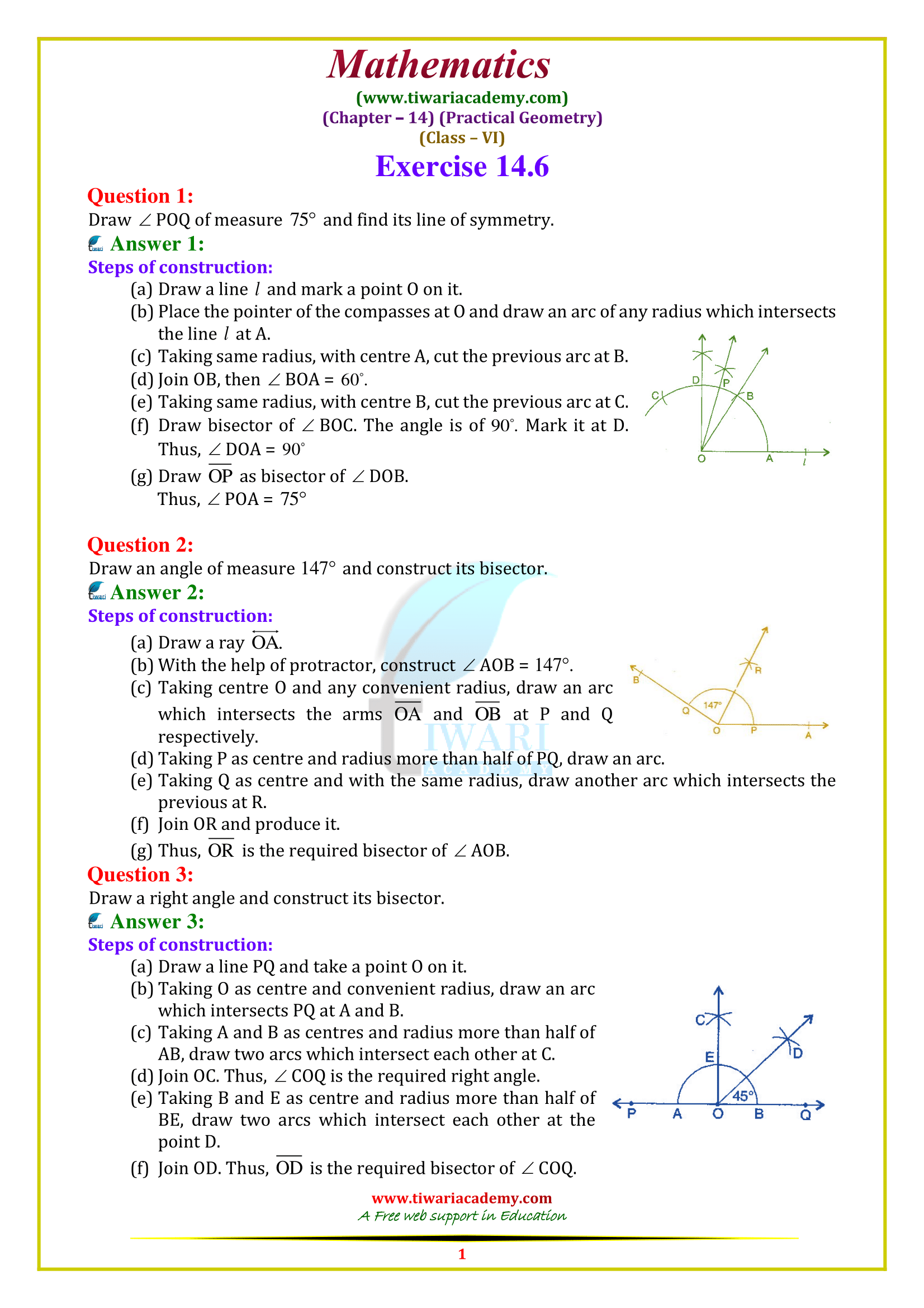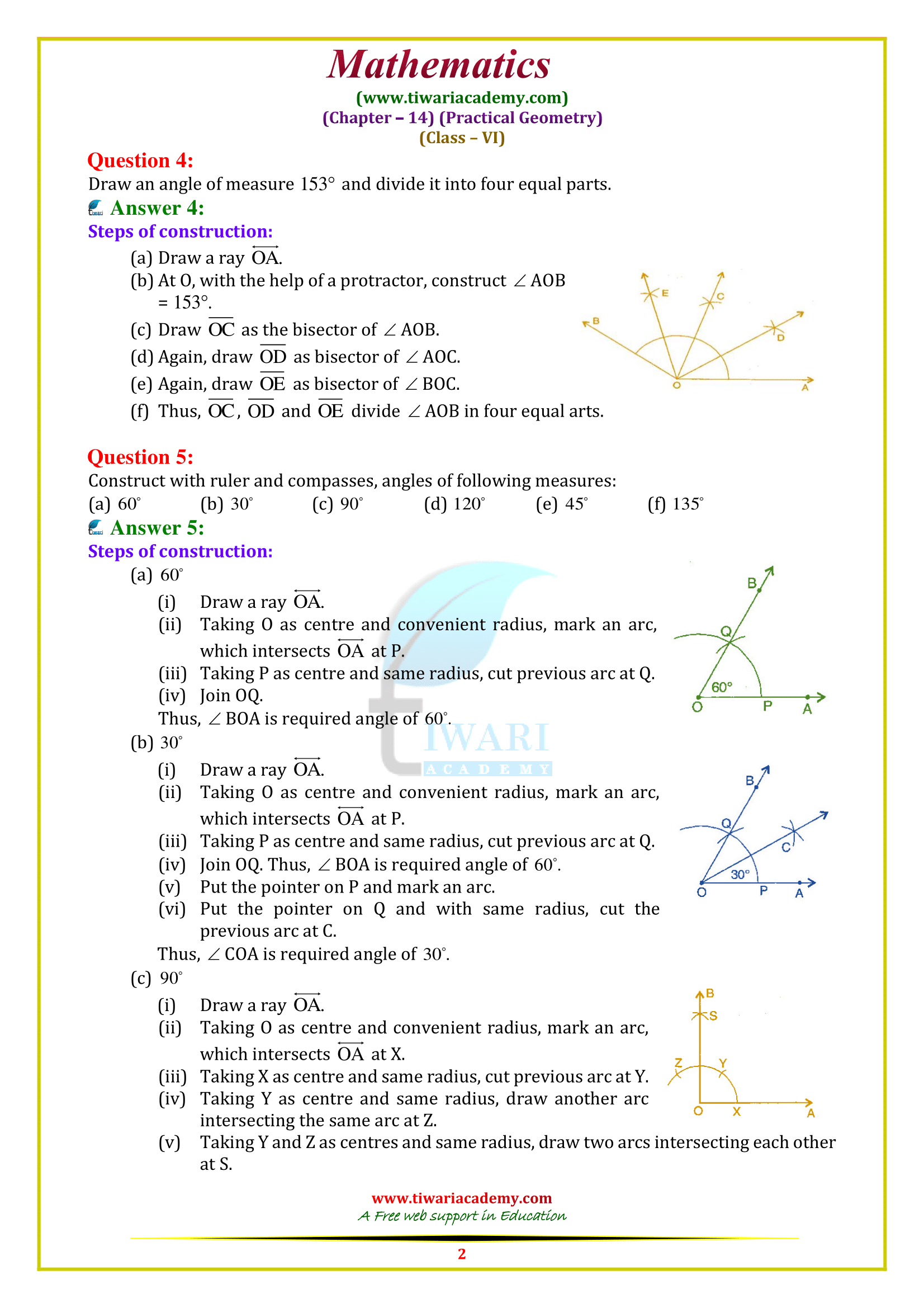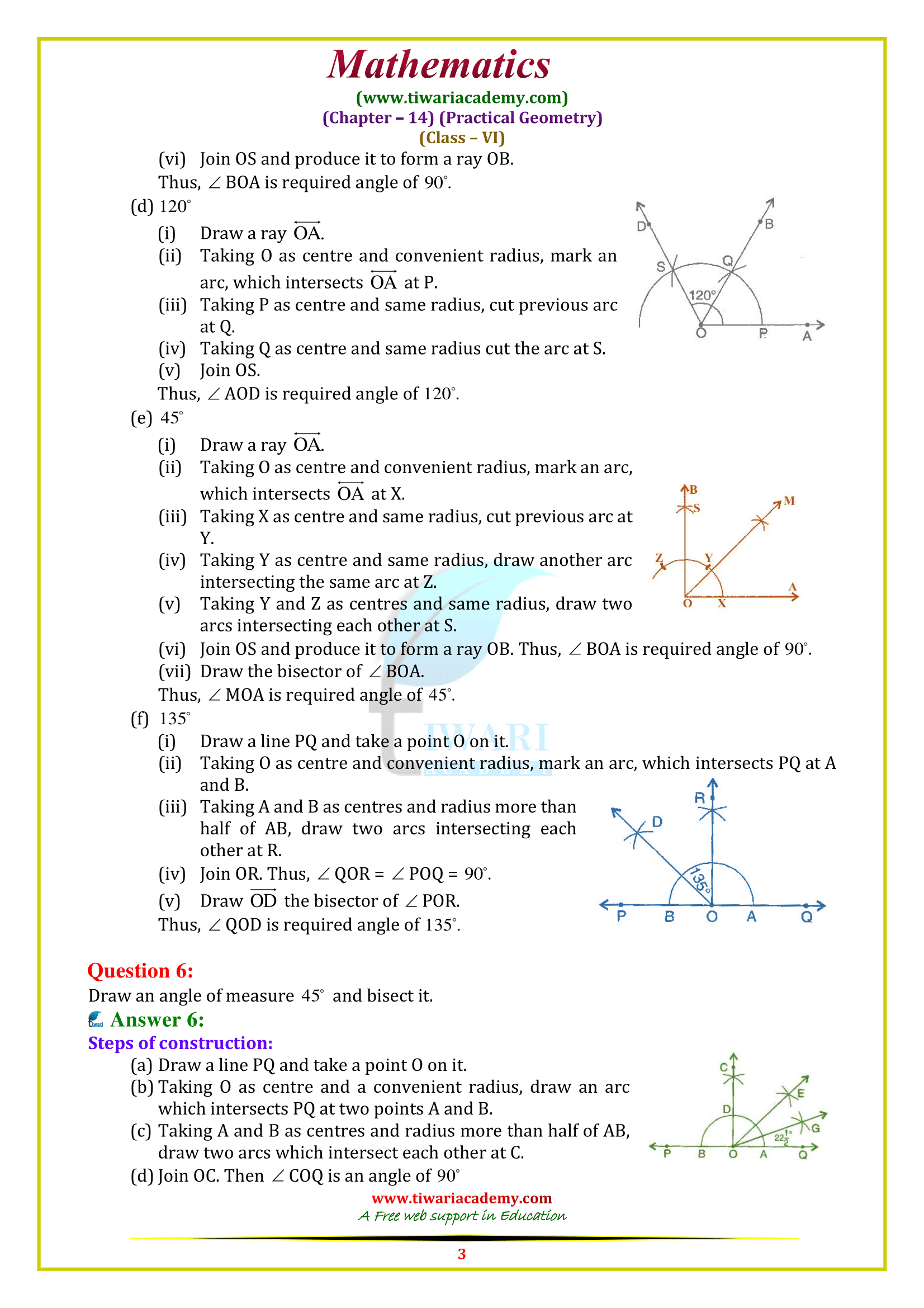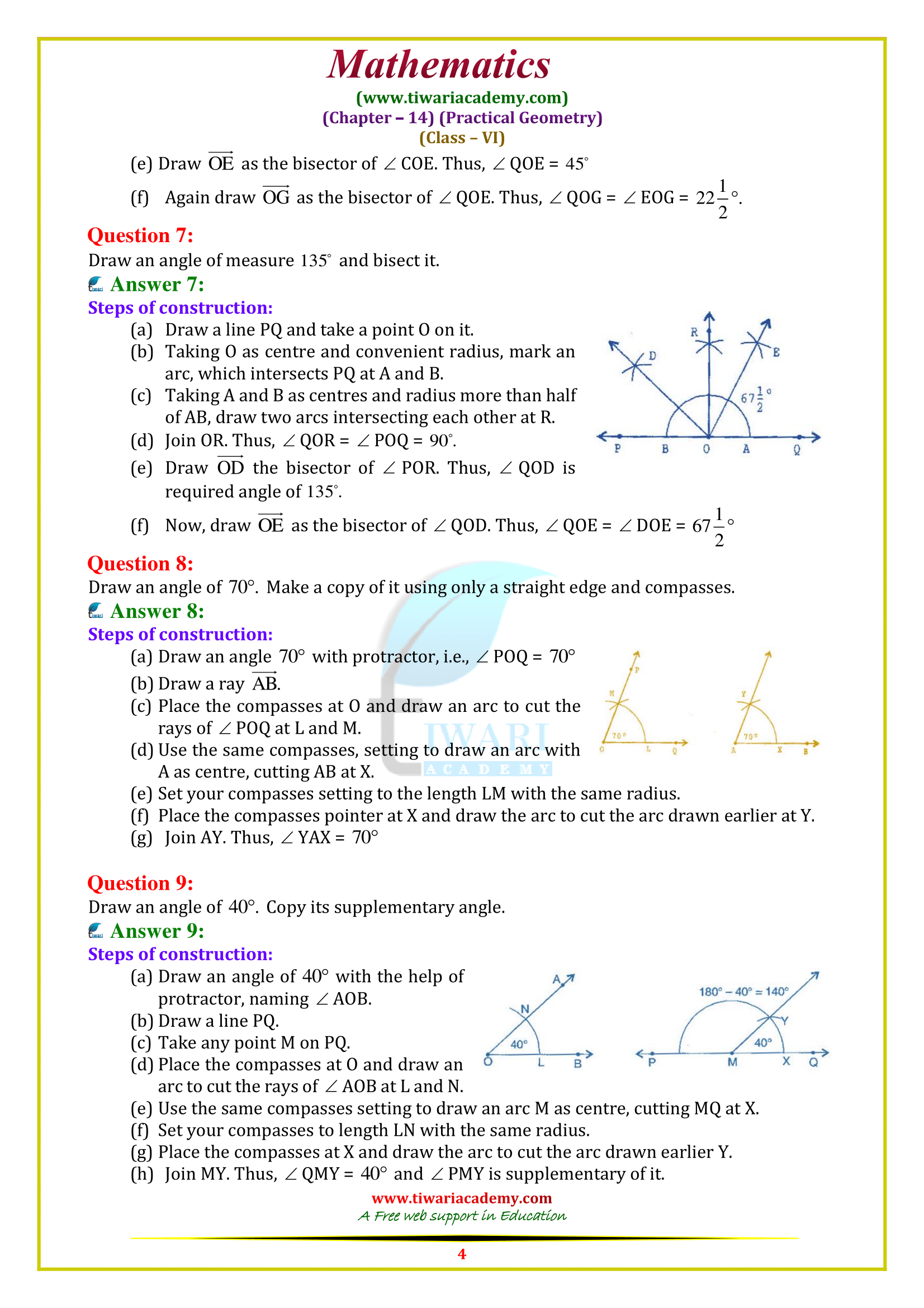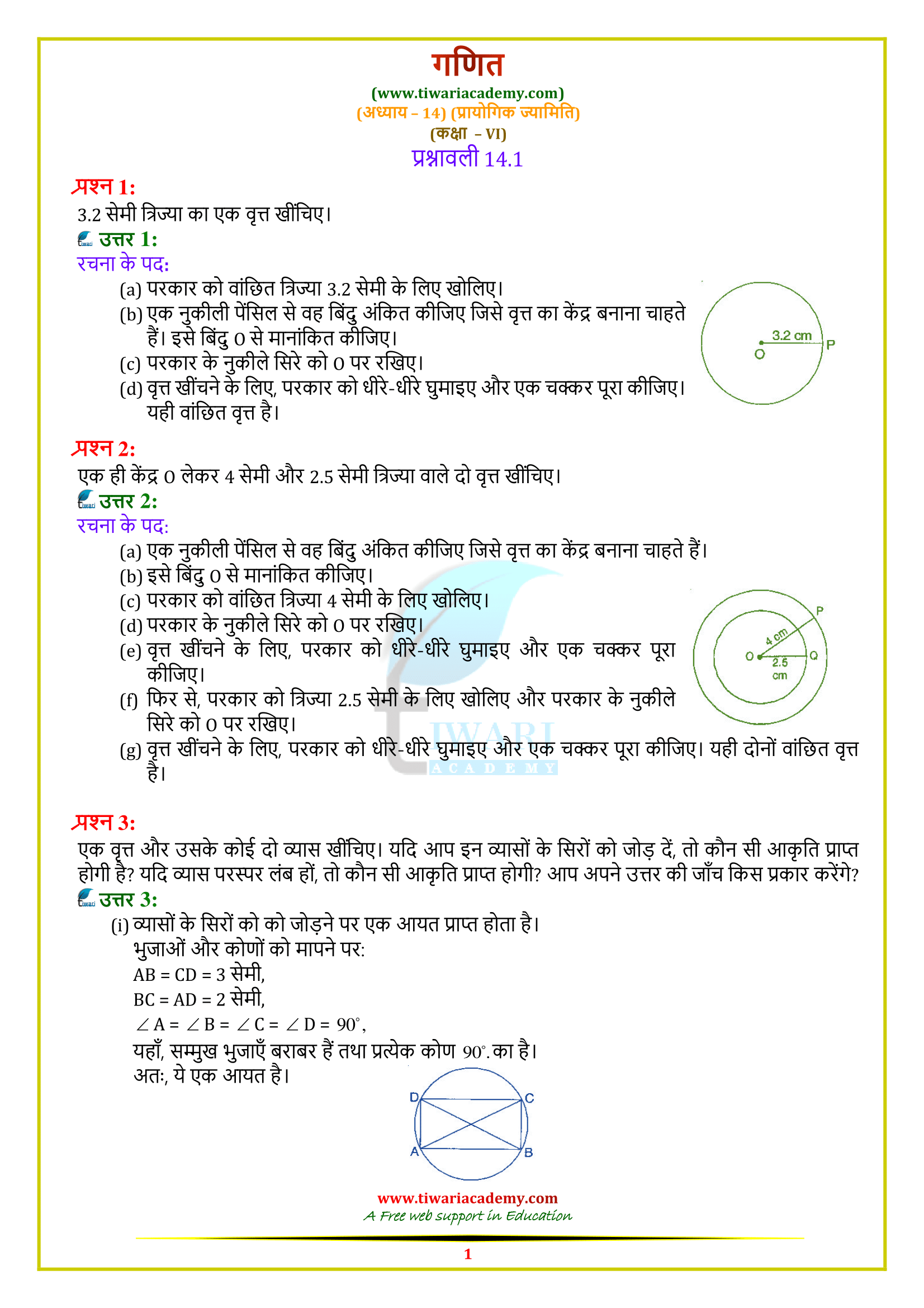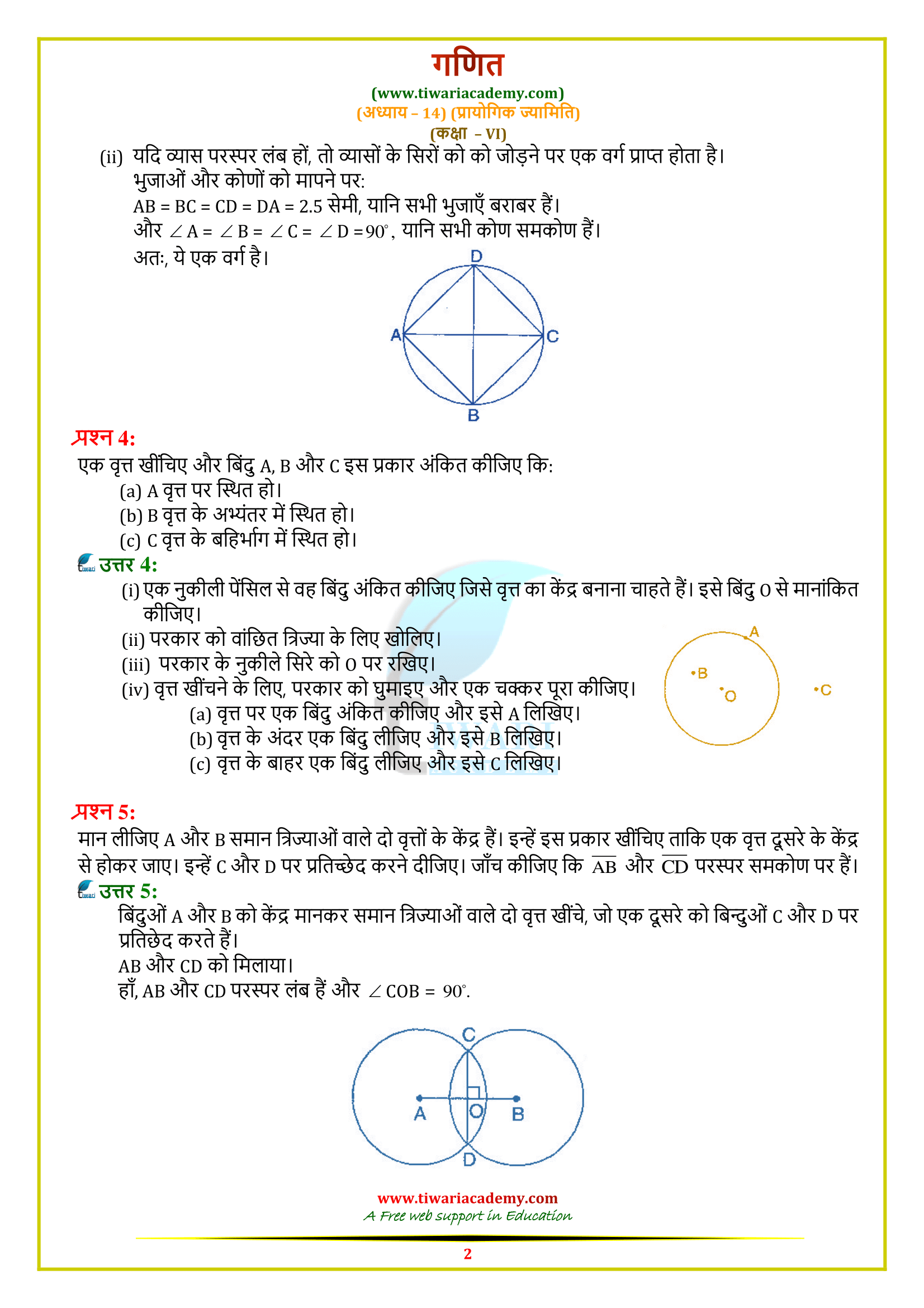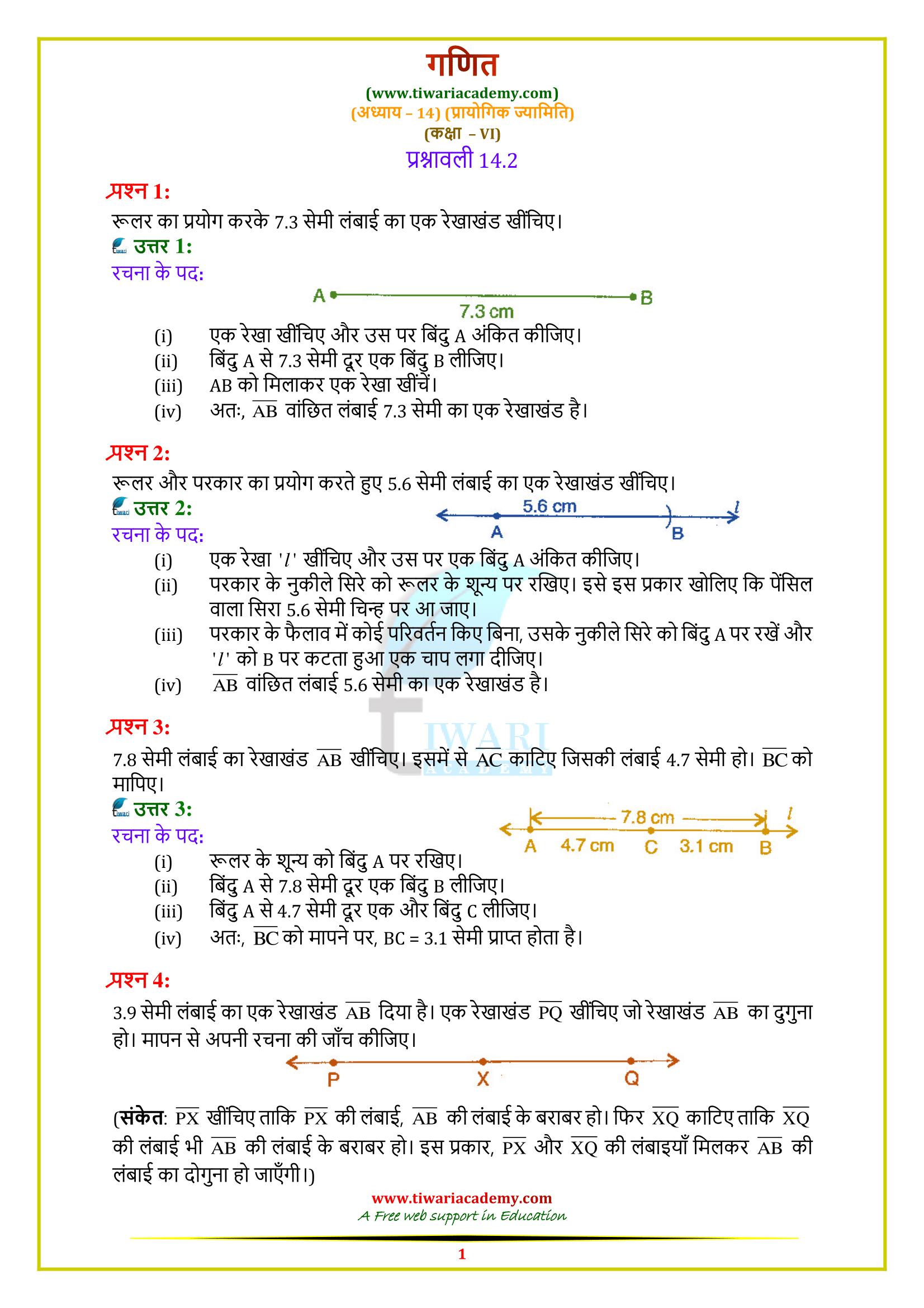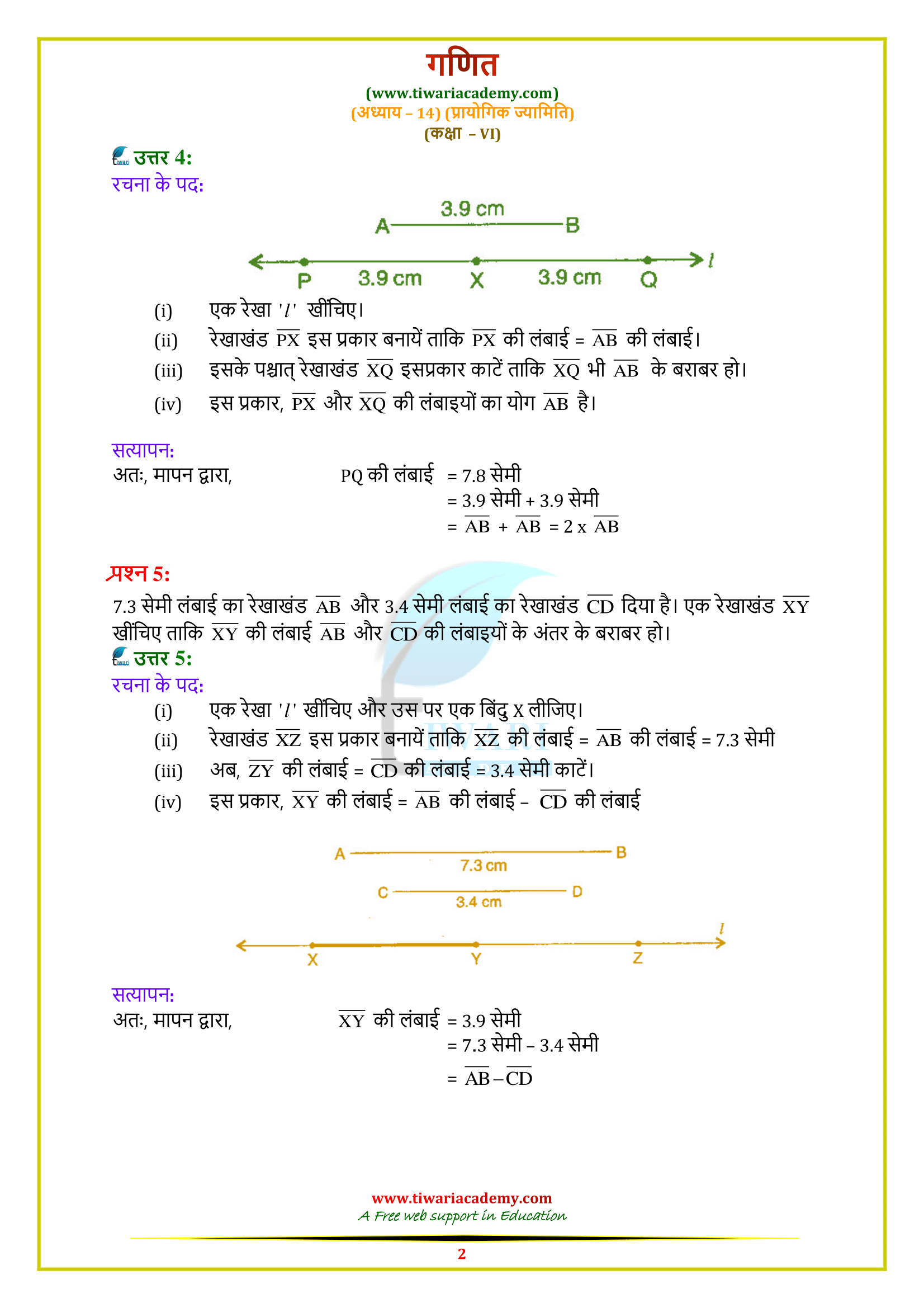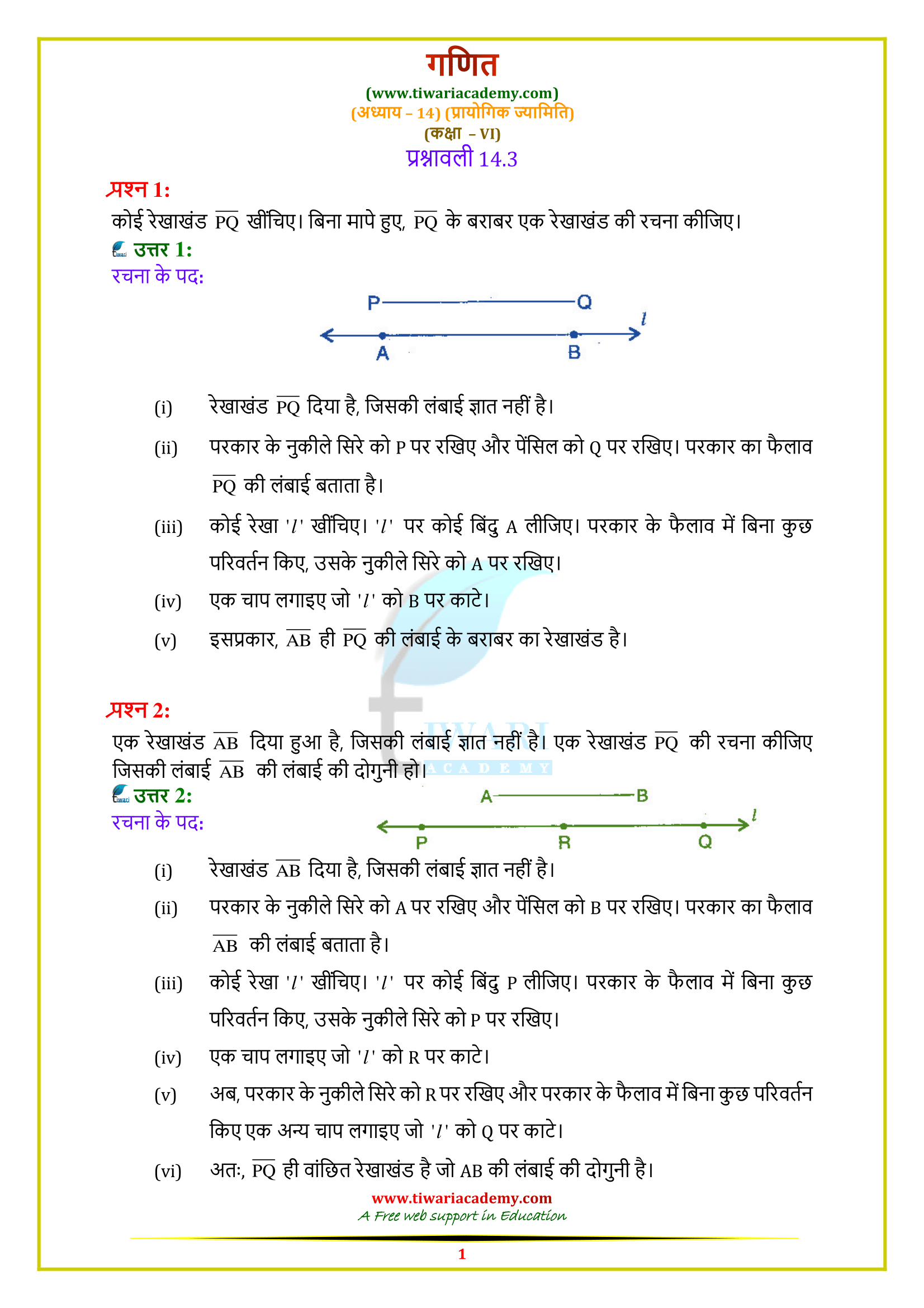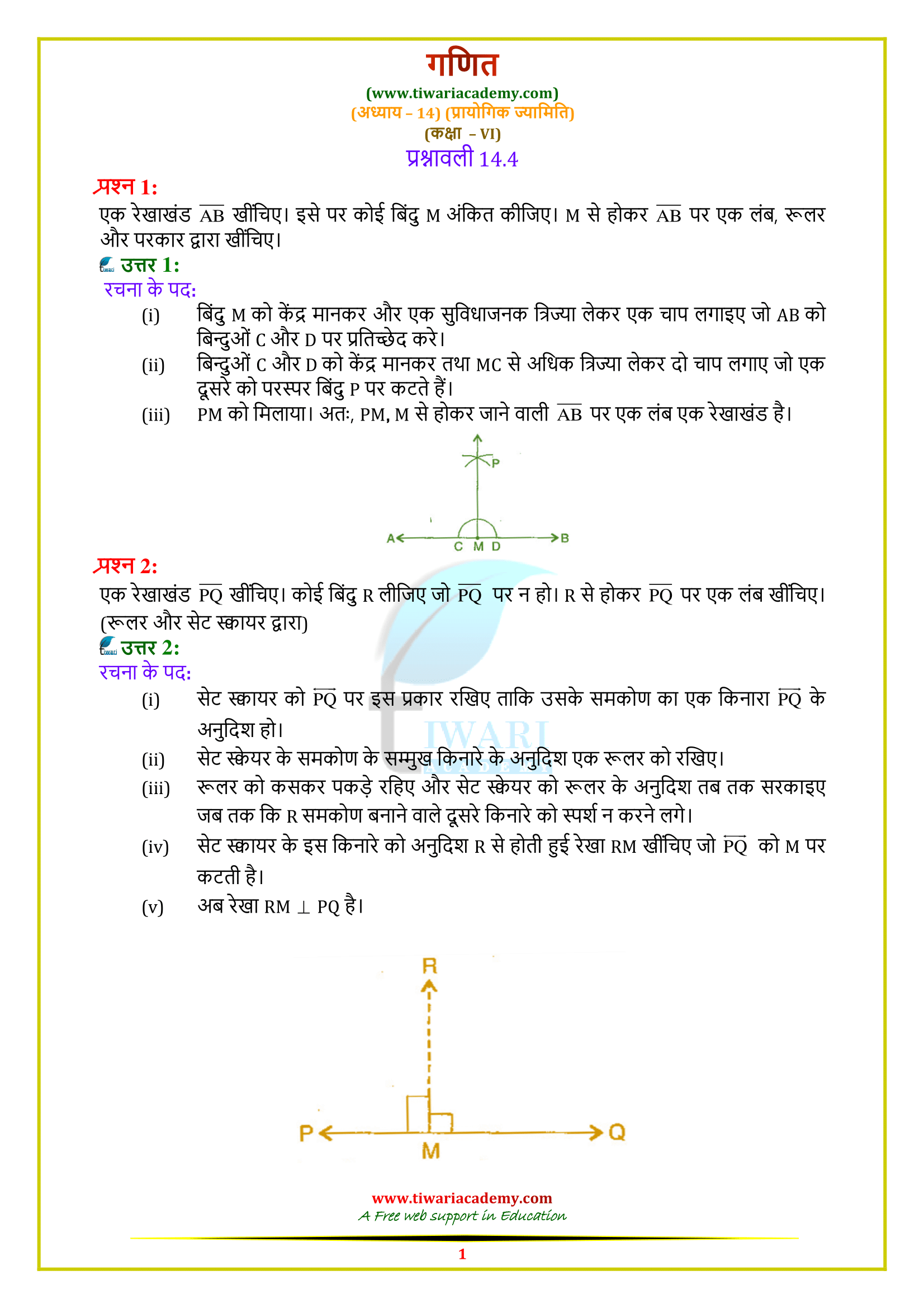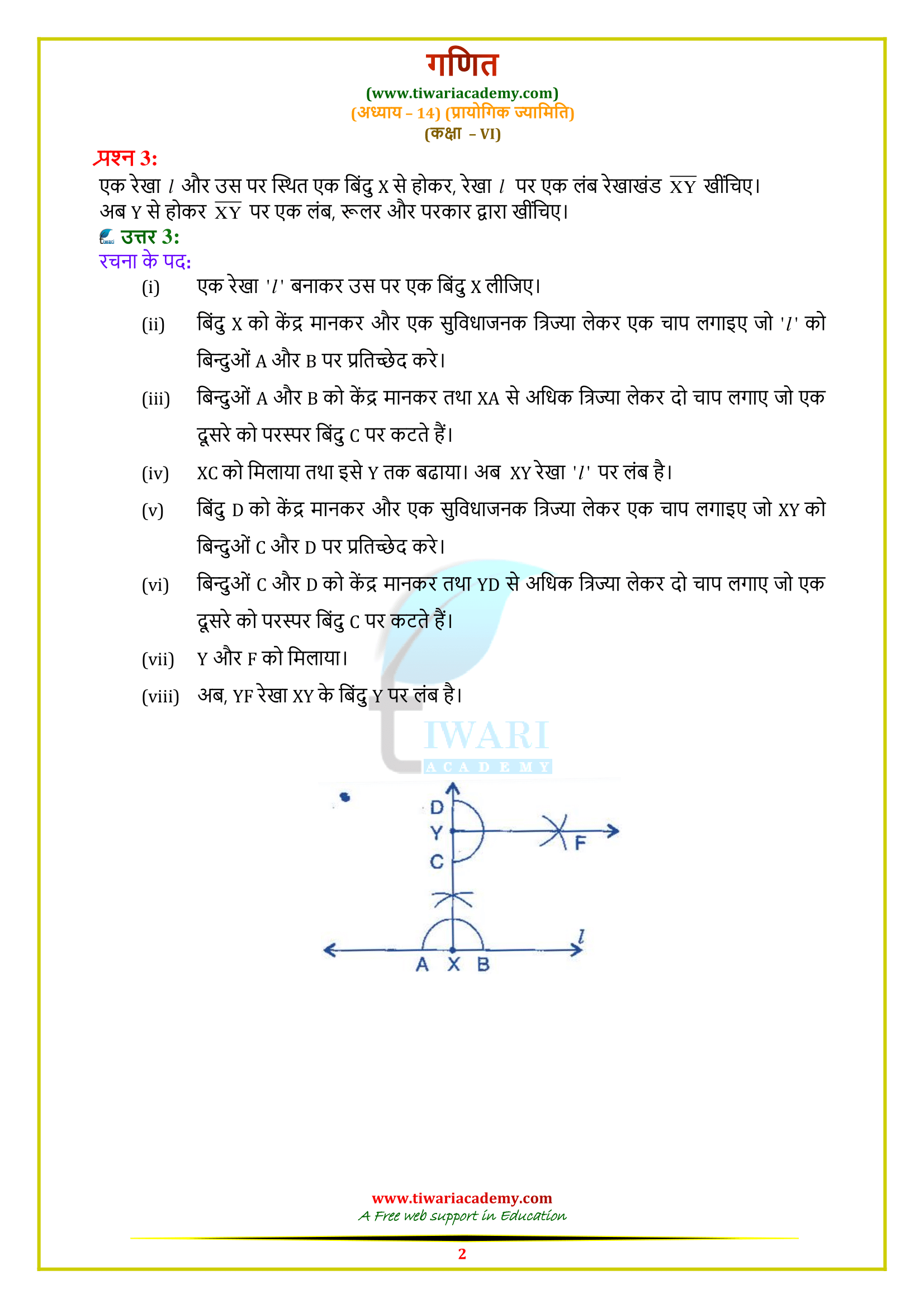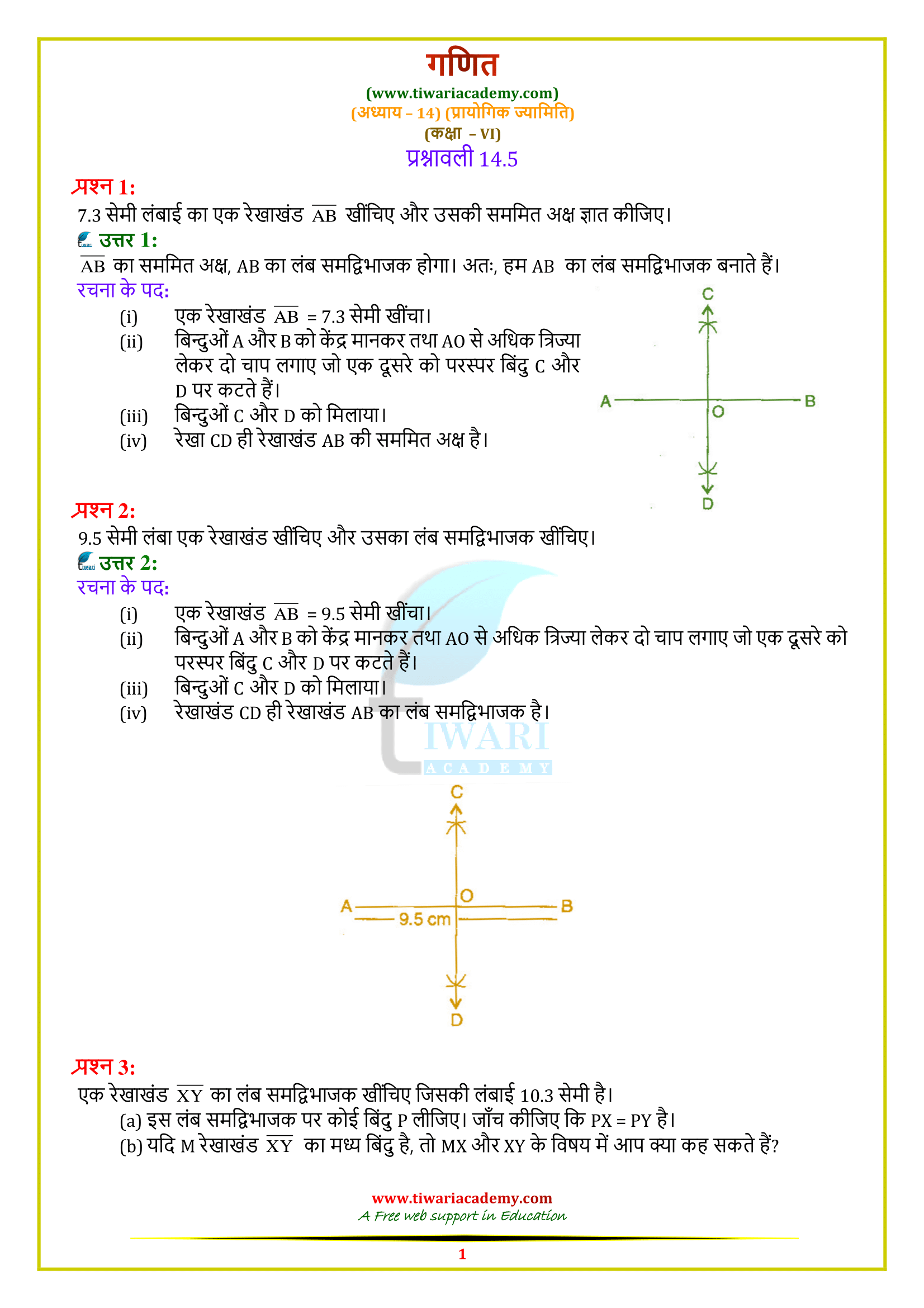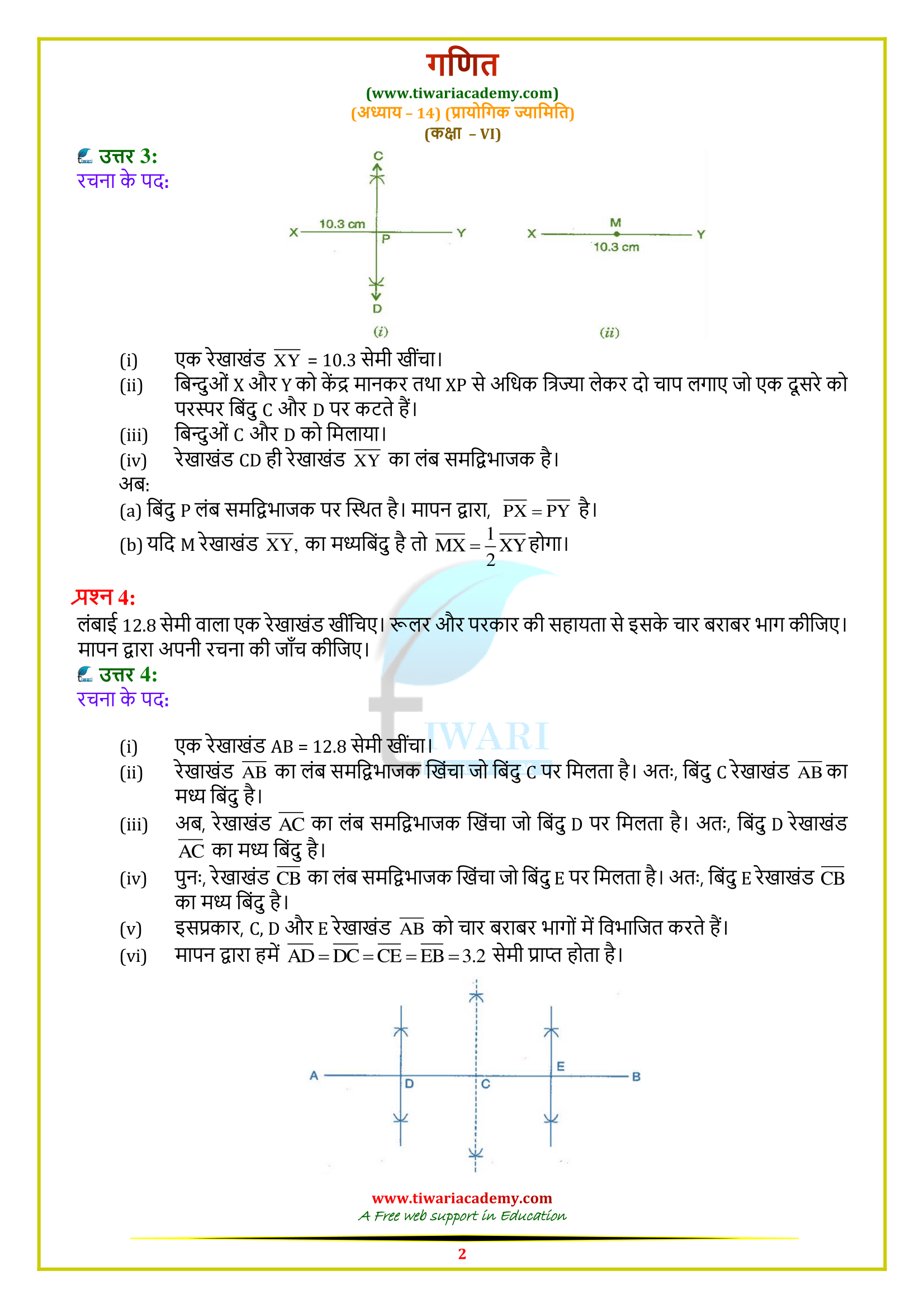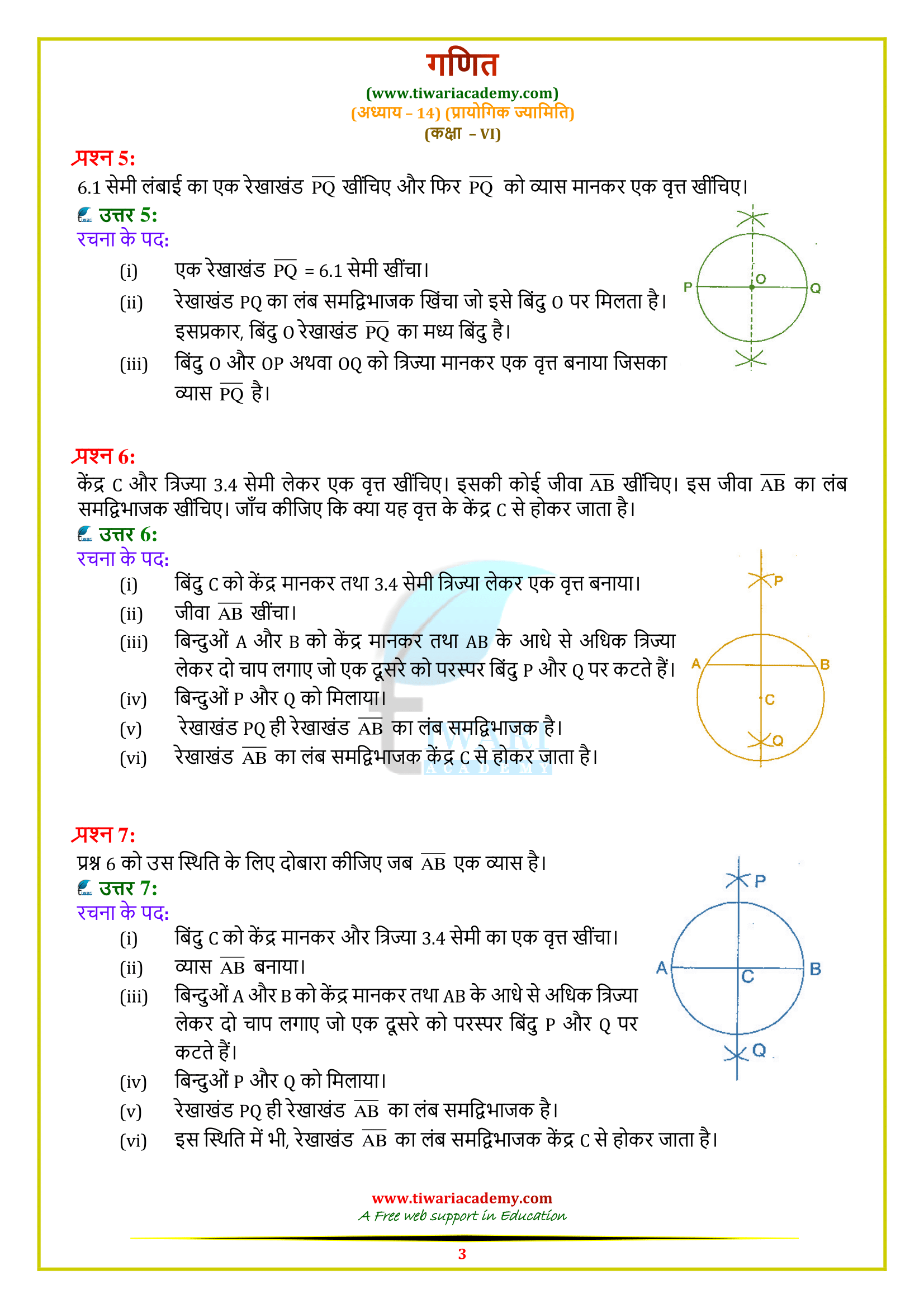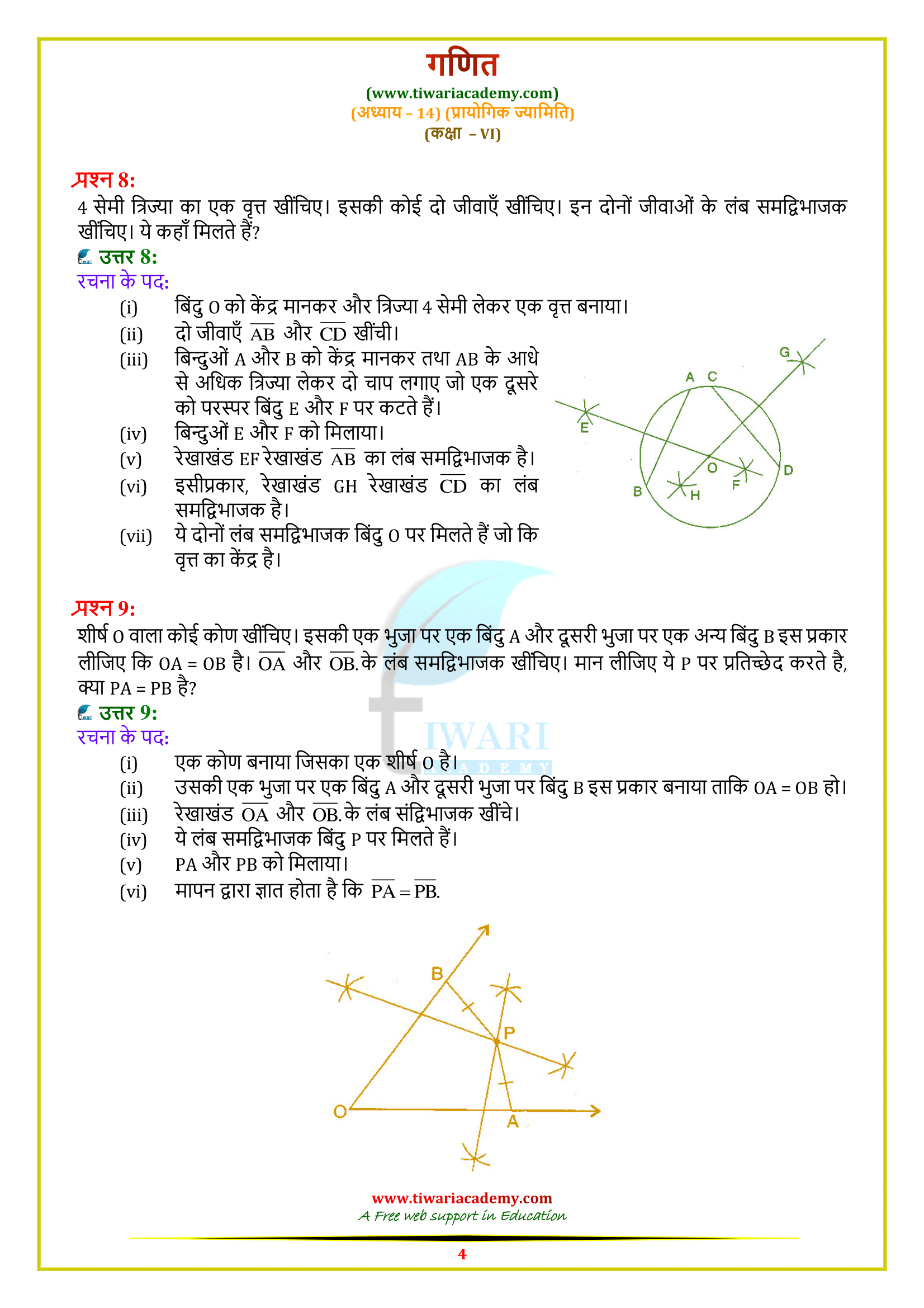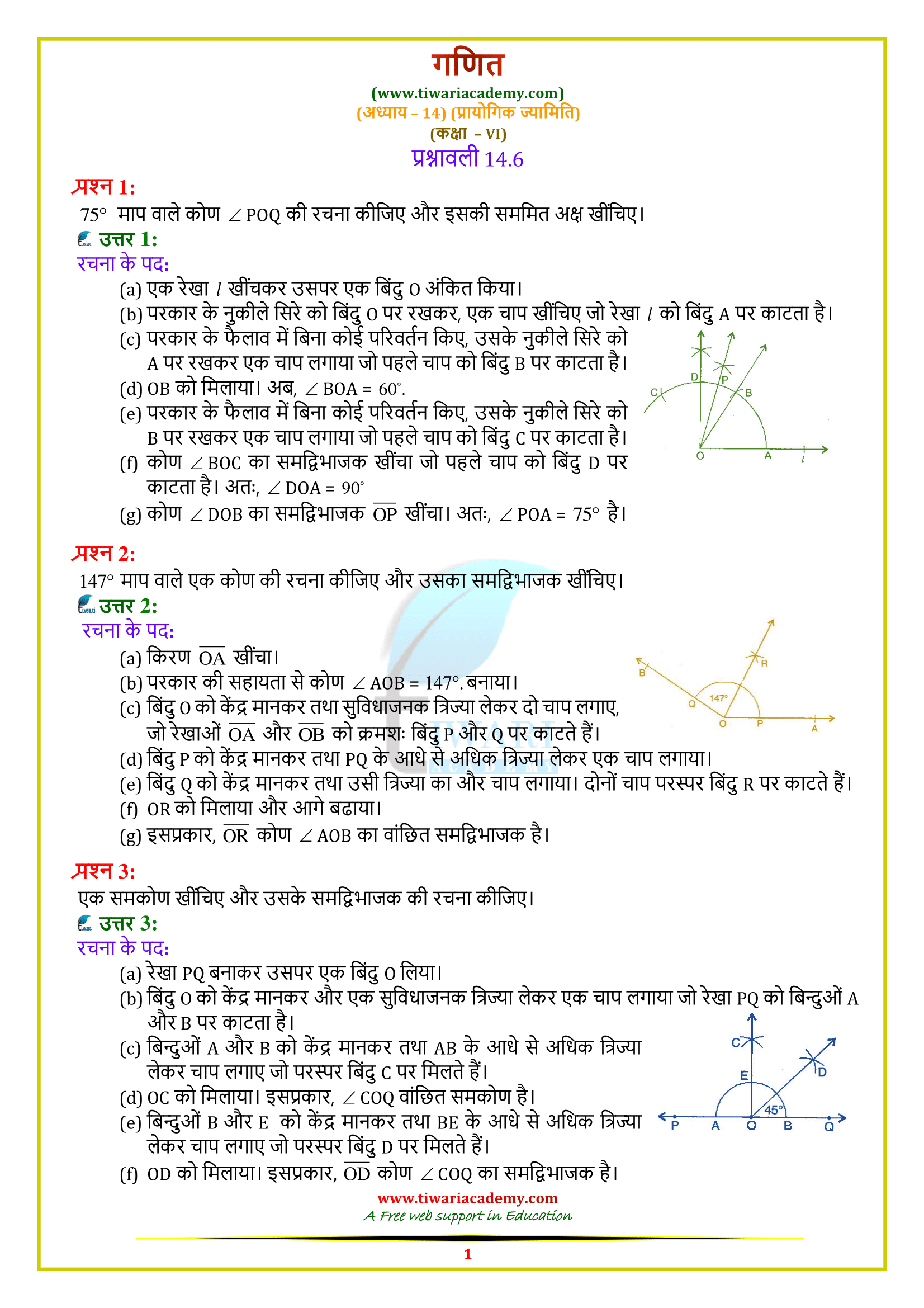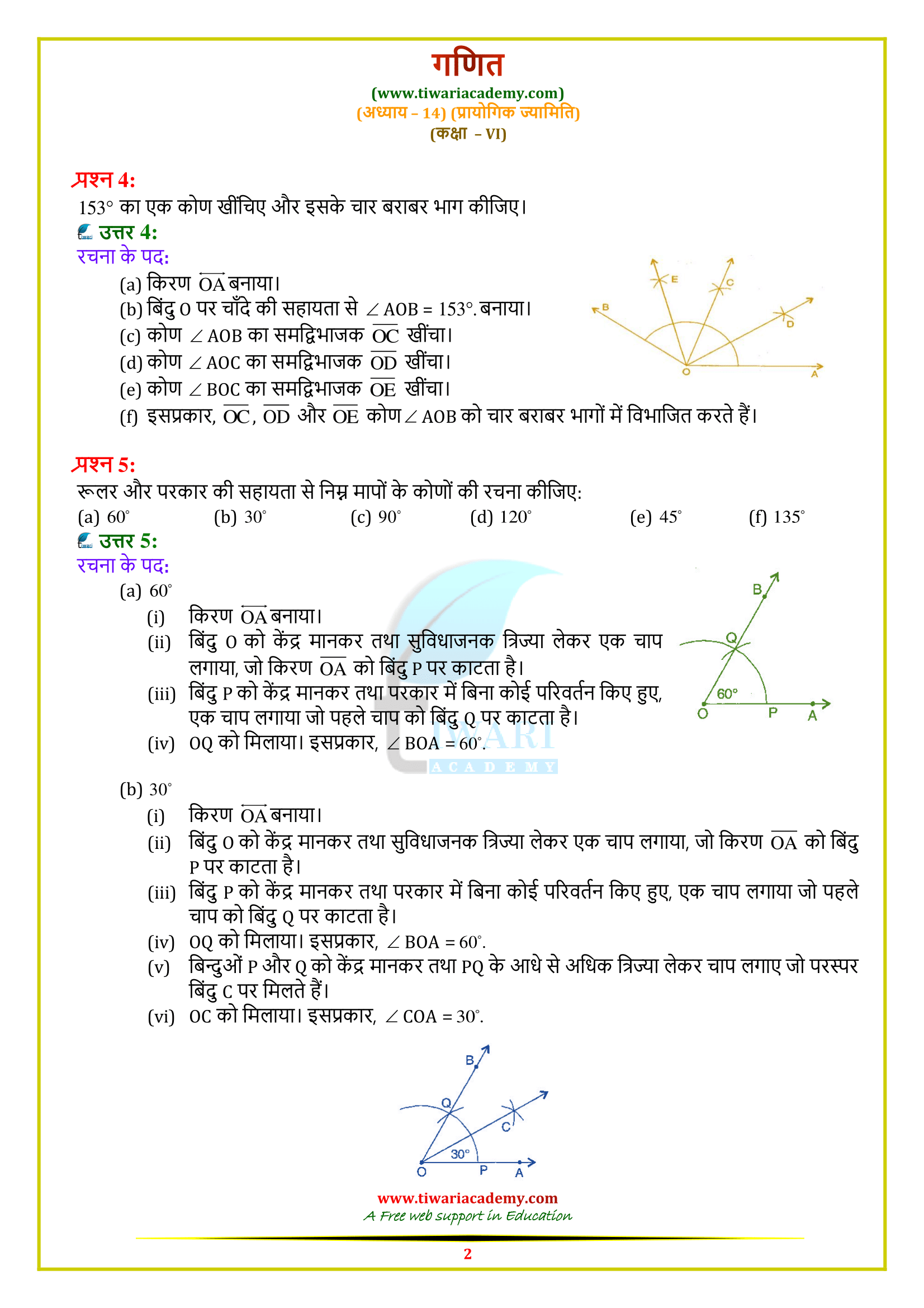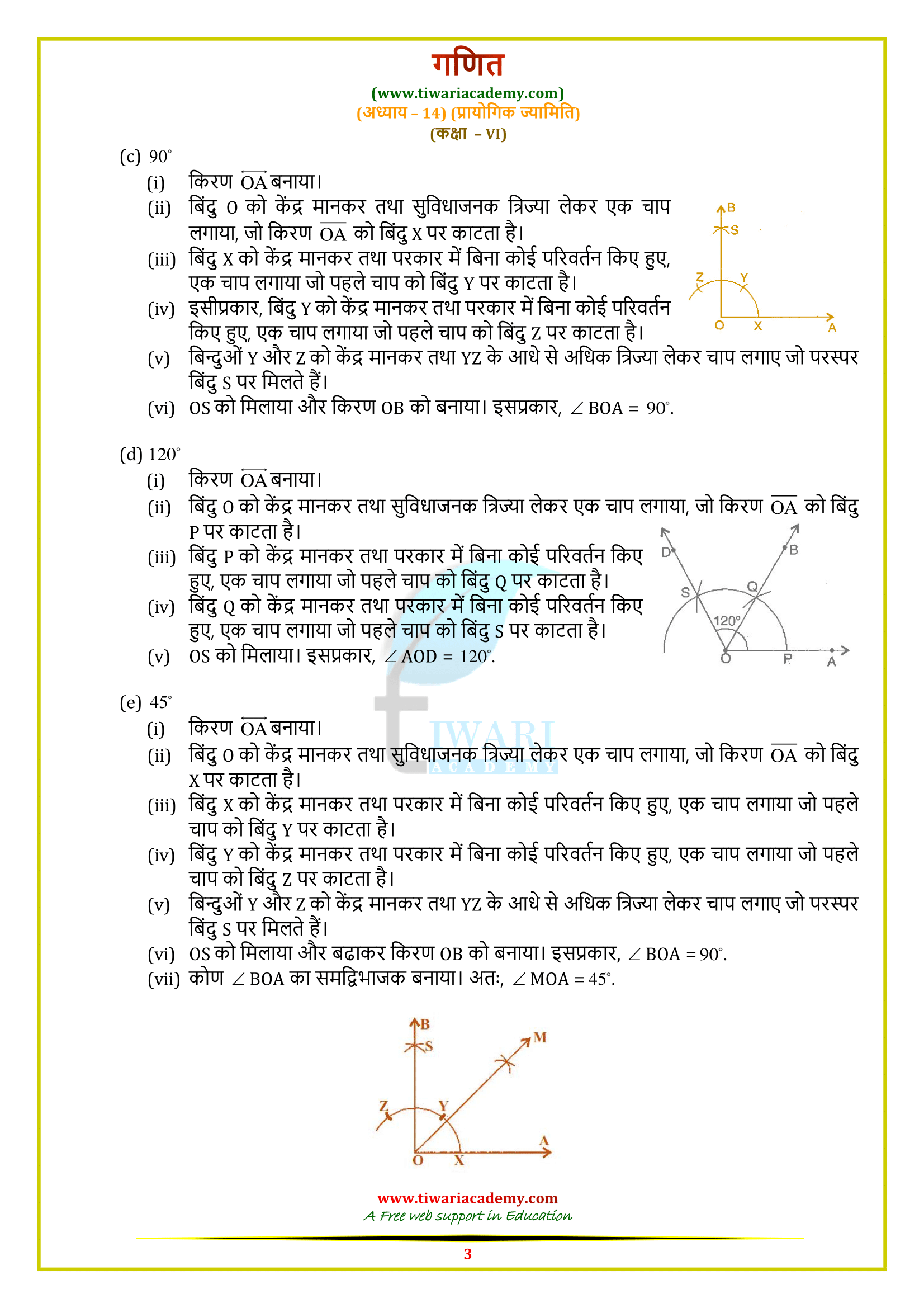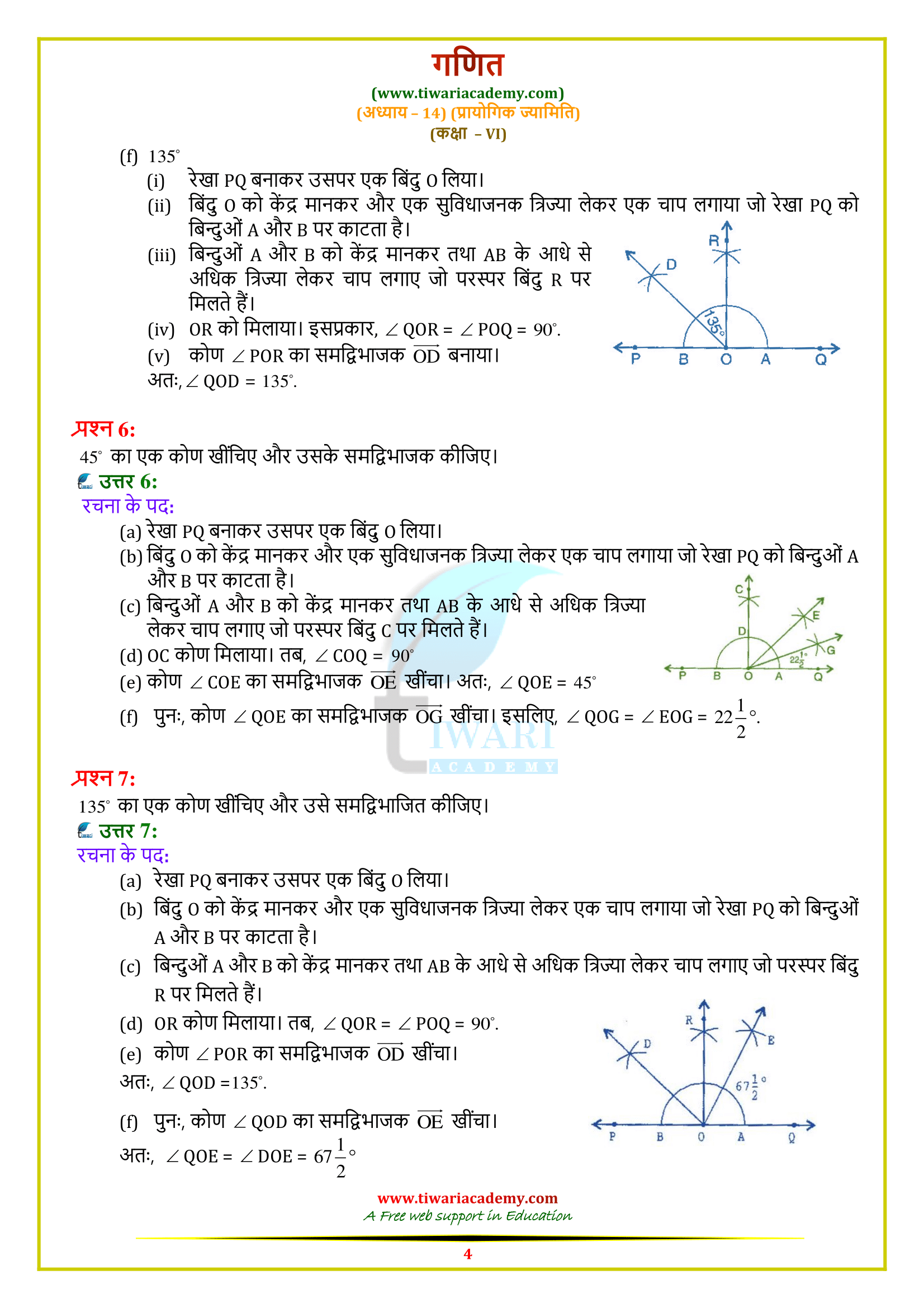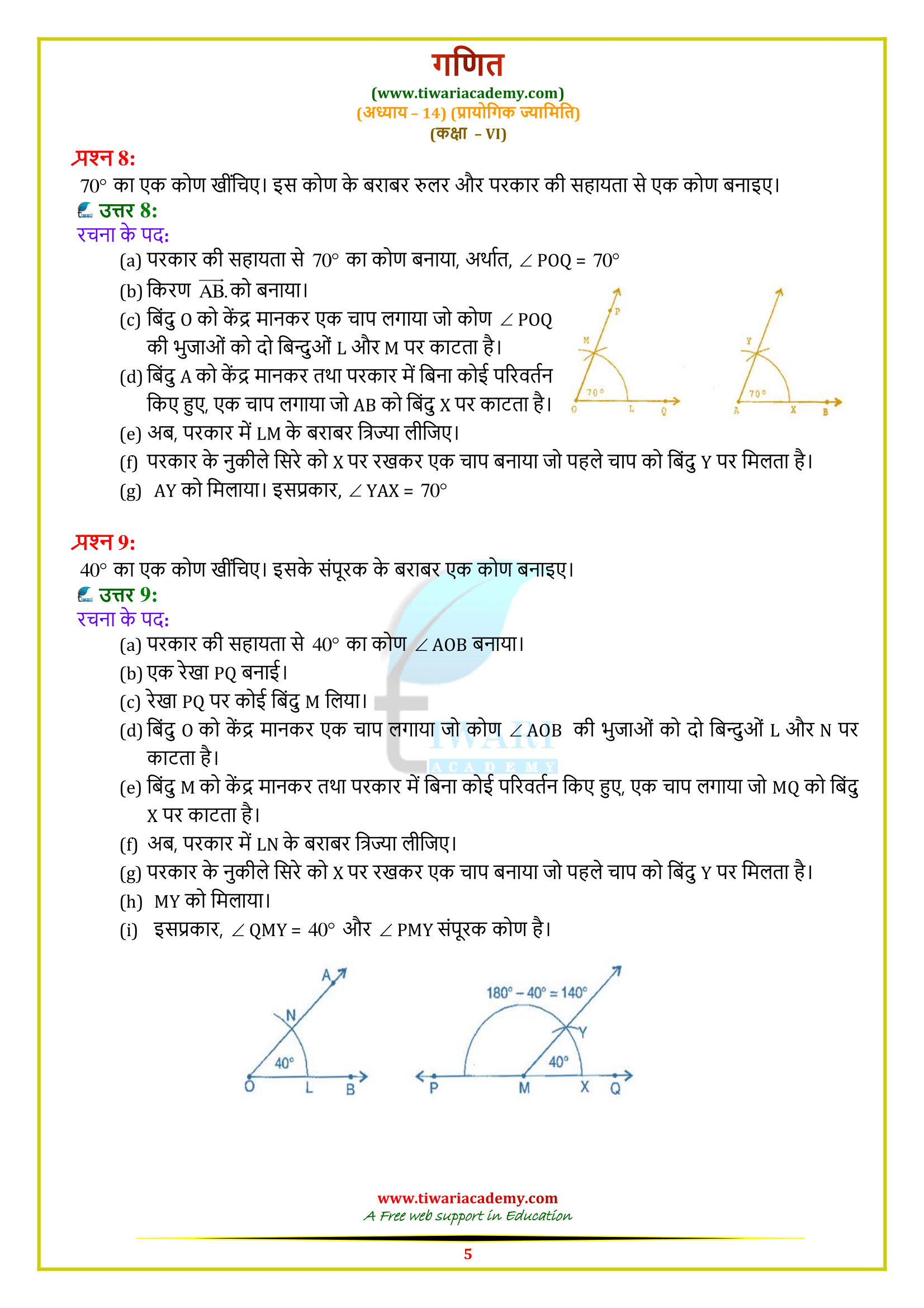NCERT Solutions for Class 6 Maths Chapter 14 Practical Geometry in Hindi and English Medium updated for CBSE and State Boards. Access up-to-date, bilingual NCERT Class 6 Maths solutions for Chapter 14, Practical Geometry, at Tiwari Academy, crafted for CBSE and State Board students.
Class 6 Maths Chapter 14 Solutions in Hindi Medium
NCERT Solutions for Class 6 Maths Chapter 14
Class VI Mathematics Exercise 14.1, Exercise 14.2, Exercise 14.3, Exercise 14.4, Exercise 14.5 and Exercise 14.6 in English & Hindi Medium. Solutions for Prashnavali 14.1, Prashnavali 14.2, Prashnavali 14.3, Prashnavali 14.4, Prashnavali 14.5 and Prashnavali 14.6 in Hindi Medium PDF to free download. Download NCERT Solutions Apps for Class 6 to use it without internet once downloaded. Videos of exercises are also given to for all answers based on CBSE Syllabus 2024-25.
| Class: 6 | Mathematics |
| Chapter 14: | Practical Geometry |
| Content: | NCERT Exercises Solution |
| Mode: | Text and Videos Format |
| Medium: | Hindi and English Medium |
Download Class 6 Maths Chapter 14 Solutions in PDF Format
Download NCERT Textbooks Solutions for Class 6 Maths Chapter 14 Practical Geometry in PDF format. Solutions are easy and simplified. All the solutions are updated for new academic session based on updated Books given on NCERT (https://ncert.nic.in/) official website. For any query, Feel free to contact us.
About Class 6 Maths Chapter 14
In 6 Maths Chapter 14 Practical Geometry, we will learn to draw figures using compass, set-square, ruler and protector.
Construction of a circle when its radius is known:
- Step 1: Open the compasses for the required radius.
- Step 2: Mark a point with a sharp pencil where we want the centre of the circle to be and name it (say O).
- Step 3: Place the pointer of the compasses at center O.
- Step 4: Turn the compasses slowly to draw the circle.
Important Questions on Class 6 Maths Chapter 14
How to draw a circle of radius 3.2 cm?
Steps of construction: (a) Open the compass for the required radius of 3.2 cm. (b) Make a point with a sharp pencil where we want the centre of circle to be. (c) Name it O. (d) Place the pointer of compasses on O. (e) Turn the compasses slowly to draw the circle. Hence, it is the required circle.
What is a ruler?
A ruler ideally has no markings on it. However, the ruler in our instruments box is graduated into centimetres along one edge. It is use to draw line segments an to measure their lengths.
What is a Compass?
A pair – a pointer on one end and a pencil on the other. It is use to mark off equal lengths nut not to measure them. It is also use to draw arcs and circles.
Construction of a line segment of a given length:
- Step 1: Draw a line l. Mark a point A on a line l.
- Step 2: Place the compasses pointer on the zero mark of the ruler. Open it to place the pencil point upto the required length mark.
- Step 3: Taking caution that the opening of the compasses has not changed, place the pointer on A and swing an arc to cut l at B.
- Step 4: AB is the required line segment of required length.
What are the uses of compass, divider, set-squares, and protractor in chapter 14 of 6th standard Maths?
The uses of ruler, compasses, divider, set-squares, and protractor in chapter 14 of 6th standard Maths are:
-
- The ruler: To draw line segments and to measure their lengths.
- The compasses: To mark off equal lengths but not to measure them. To draw arcs and circles.
- The divider: To compare lengths.
- The set-squares: To draw perpendicular and parallel lines.
- The protractor: To draw and measure angles.
Which topics do teachers teach in chapter 14 of class 6th Maths?
The topics that teachers teach in chapter 14 of grade 6th Maths are:
1. The circle.
2. Construction of a circle when its radius is known.
3. A line segment.
4. Construction of a line segment of a given length.
5. Constructing a copy of a given line segment.
6. Perpendiculars.
7. Perpendicular to a line through a point on it.
8. Perpendicular to a line through a point not on it.
9. The perpendicular bisector of a line segment.
10. Angles
11. Constructing an angle of a given measure
12. Constructing a copy of an angle of unknown measure
13. Bisector of an angle
14. Angles of special measures
Does chapter 14 of 6th Maths takes longer time to understand?
Chapter 14 of 6th class Maths is not very short and not very lengthy. This chapter has 6 exercises.
In the first exercise (Ex 14.1), there are 4 questions.
The second exercise (Ex 14.2) has 5 questions.
The third exercise (Ex 14.3) contains 2 questions.
In the fourth exercise (Ex 14.4), there are 3 questions.
There are 9 questions in the fifth exercise (Ex 14.5).
The sixth exercise (Ex 14.6) contains 9 questions.
So, chapter 14 of class 6th Maths has 32 questions.
What is the difficulty level of chapter 14 Class 6 Maths?
No, chapter 14 of 6th class Maths is not at all challenging. This chapter is quite easy. In this chapter, students have to do construction using rulers, compasses, dividers, set-squares, and protractors. Some students find this chapter very interesting.
